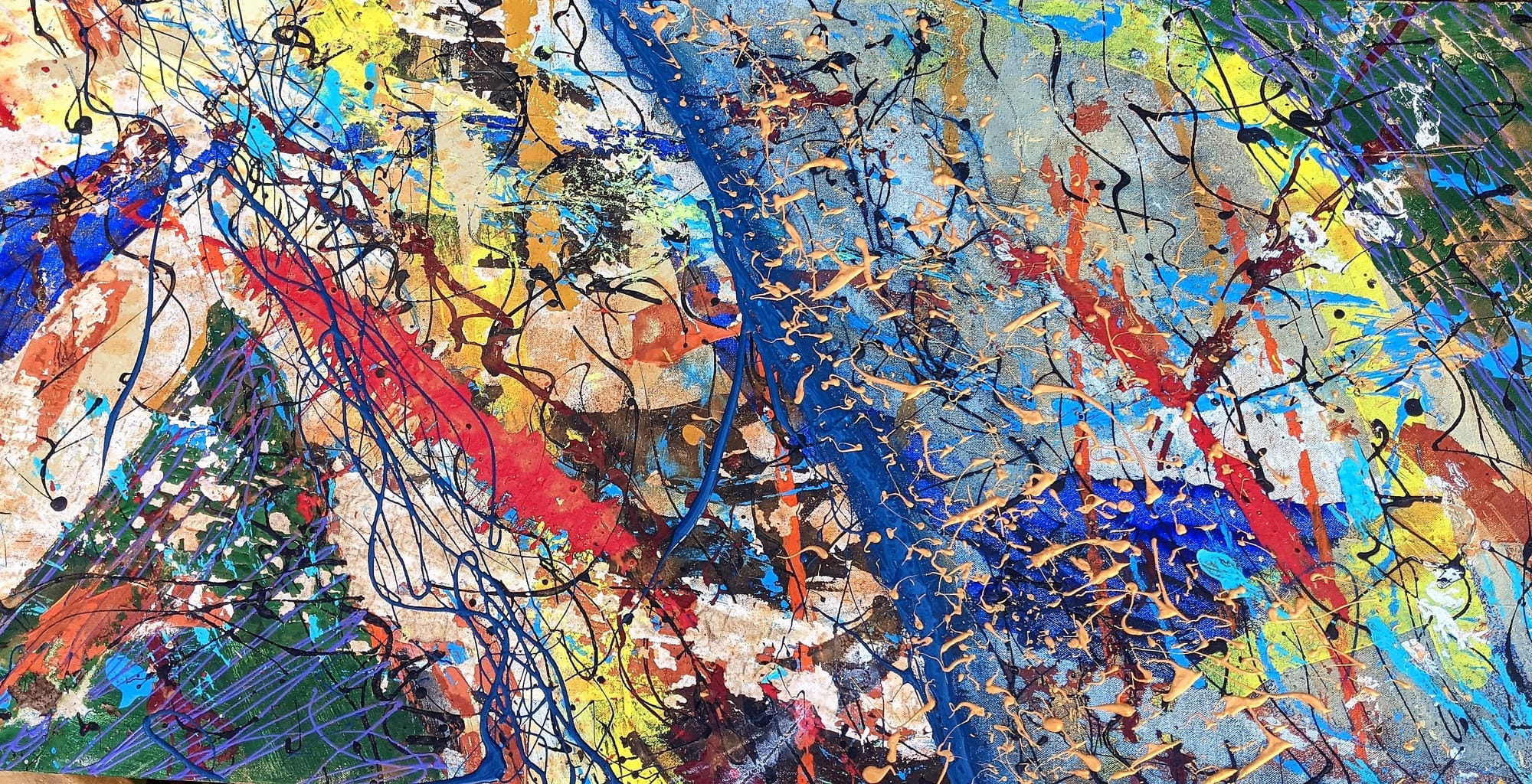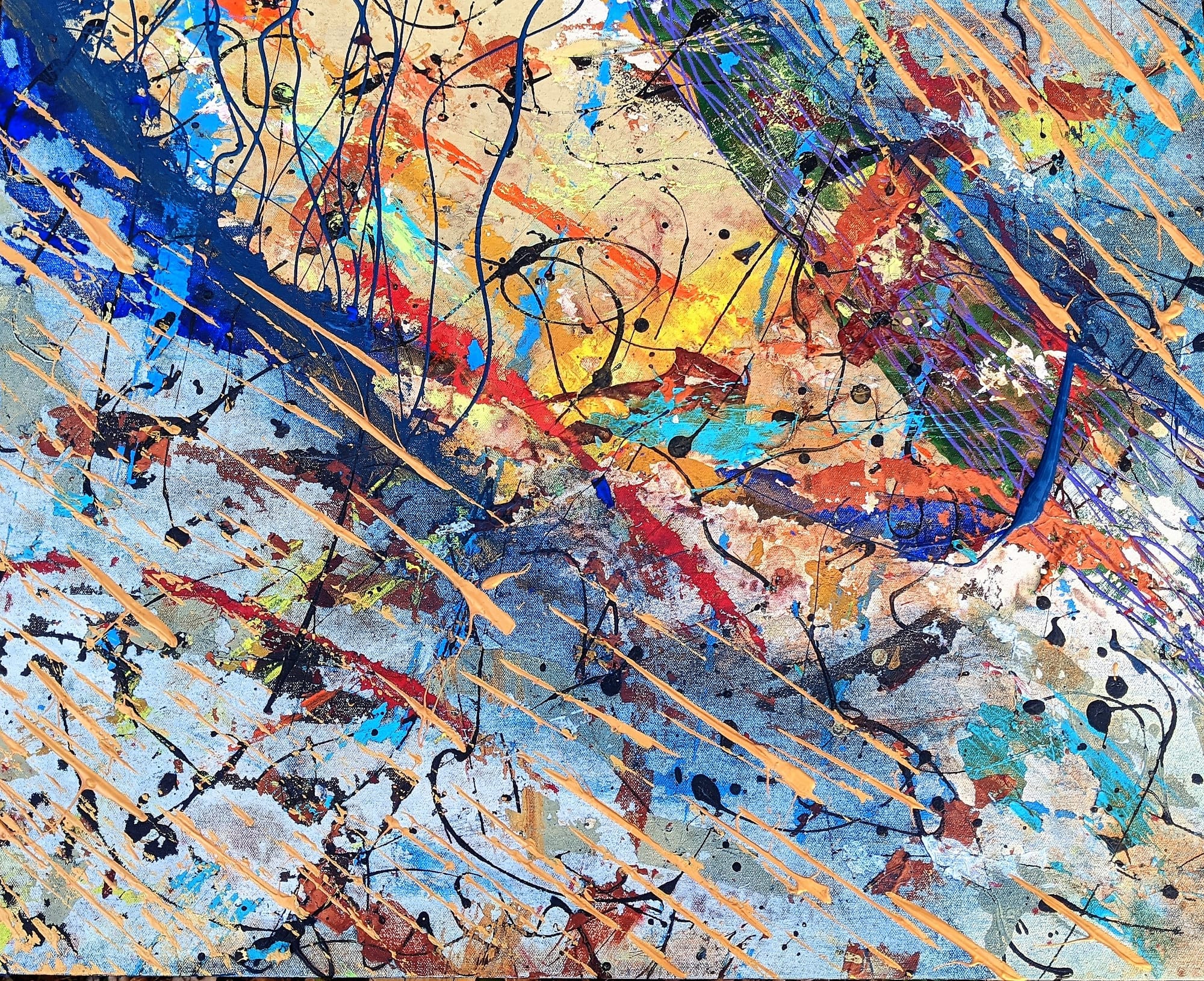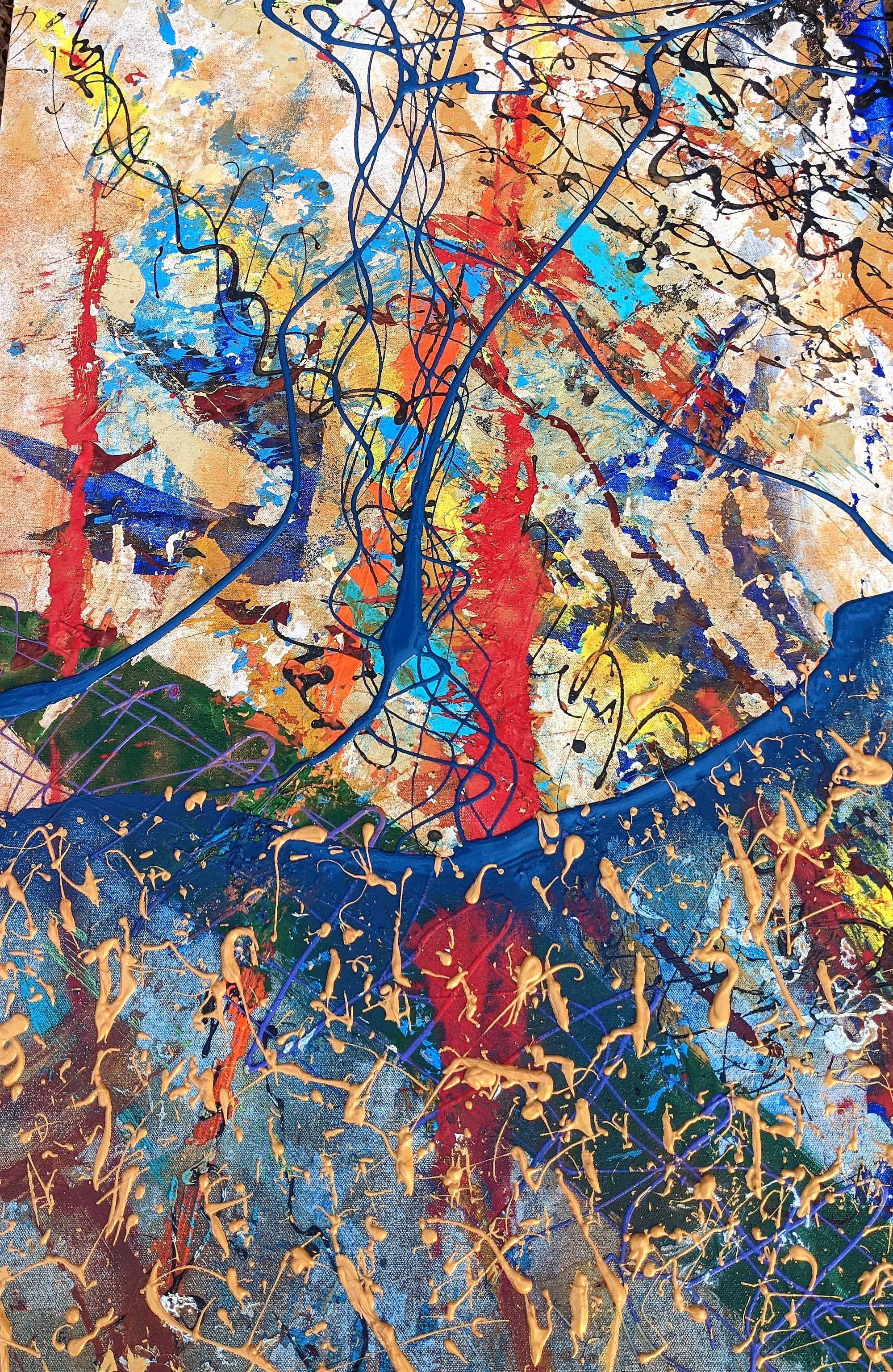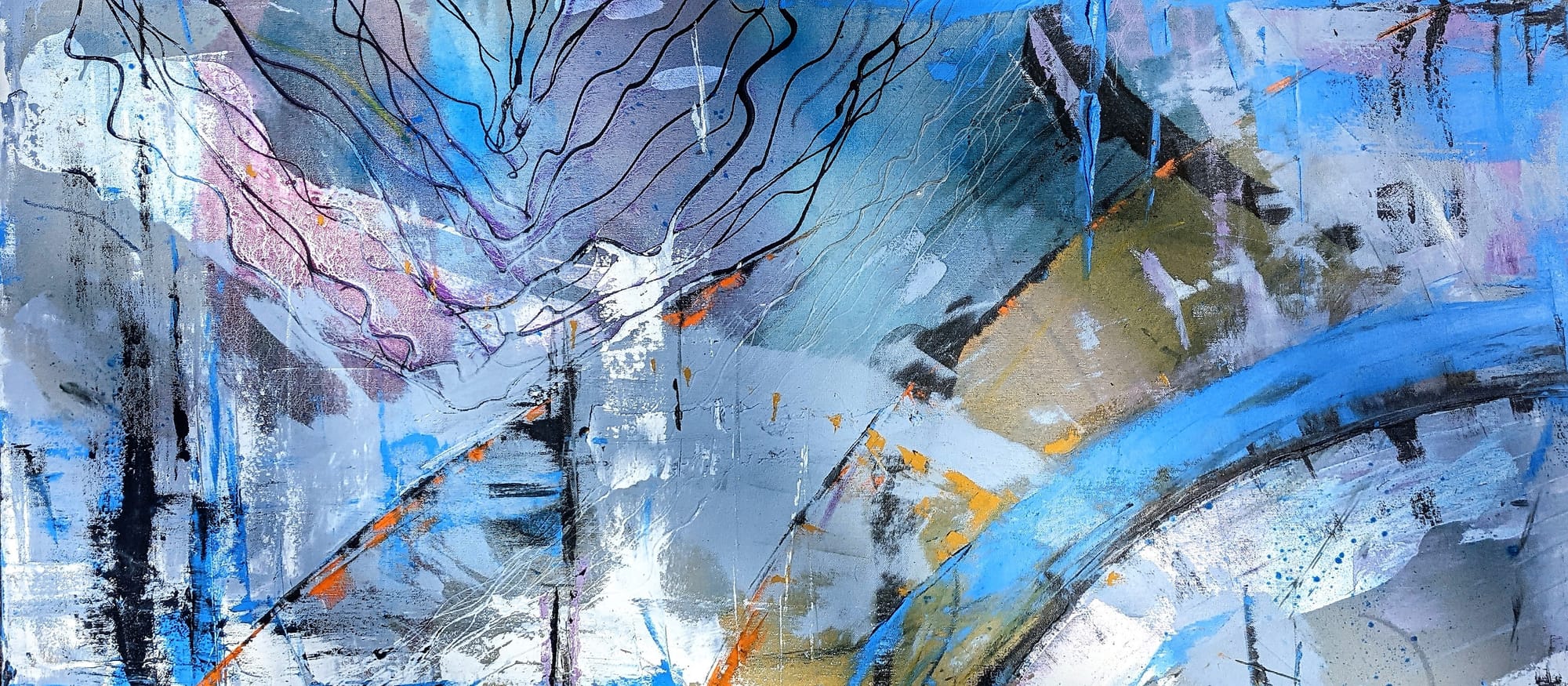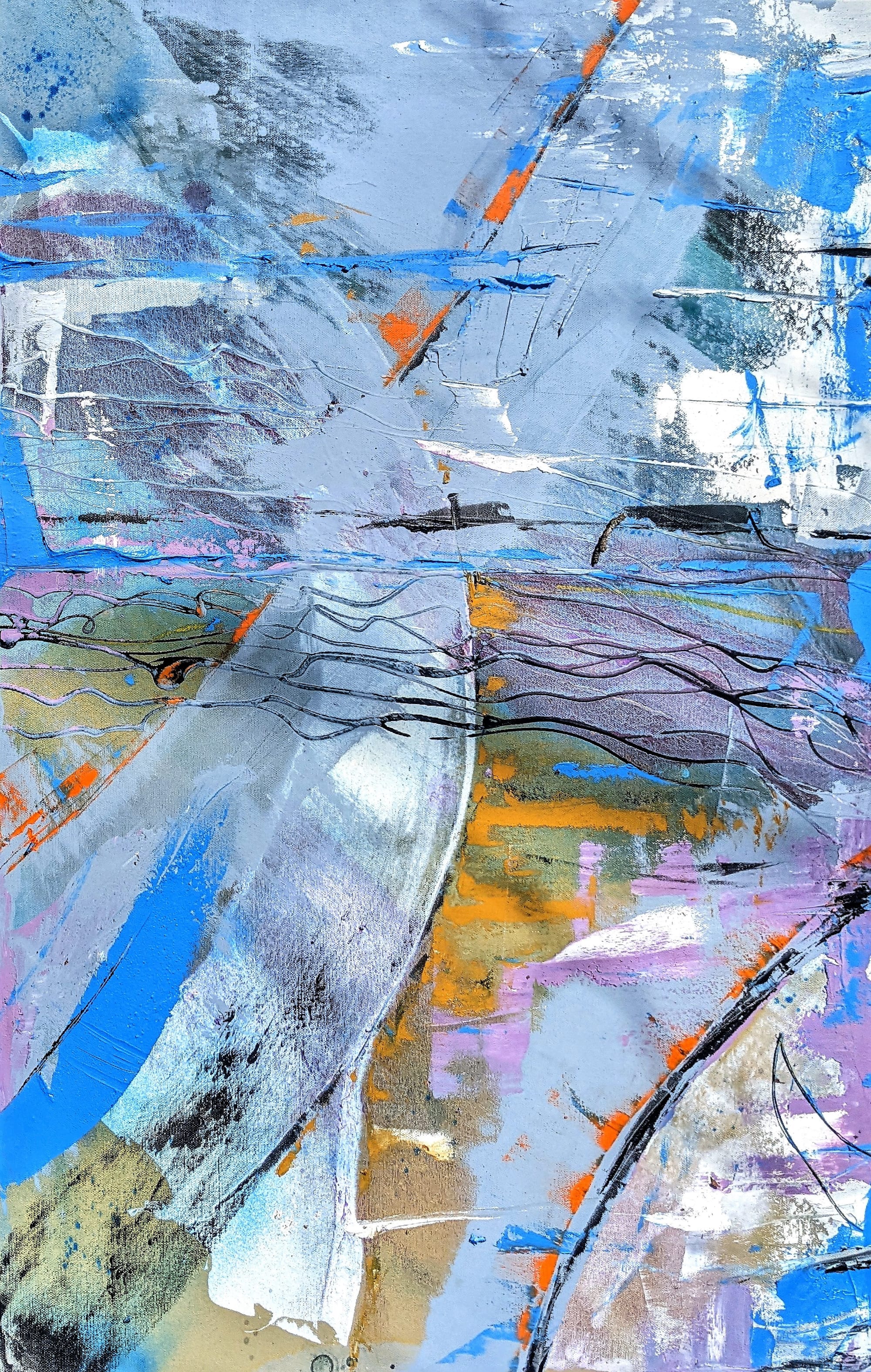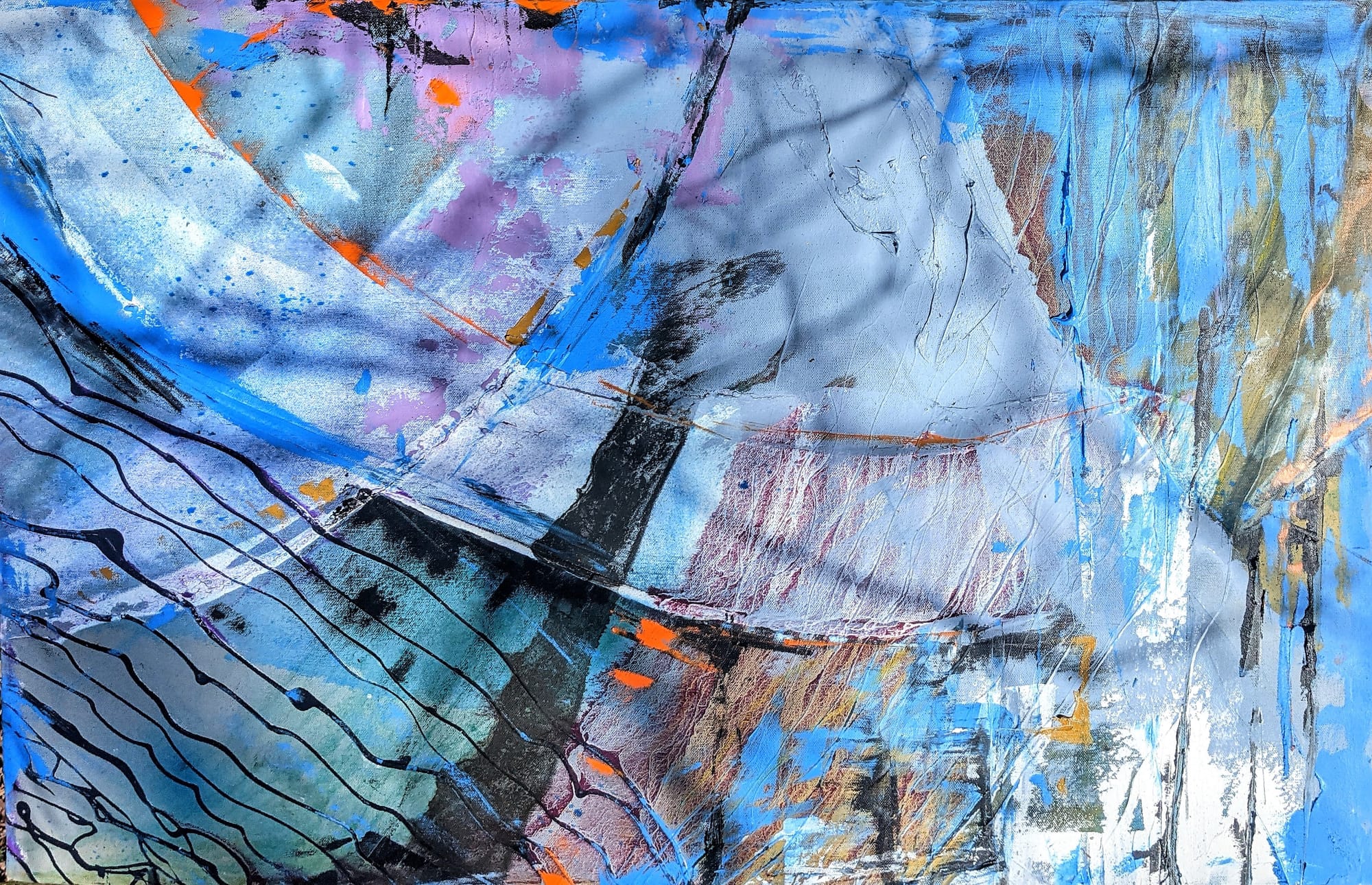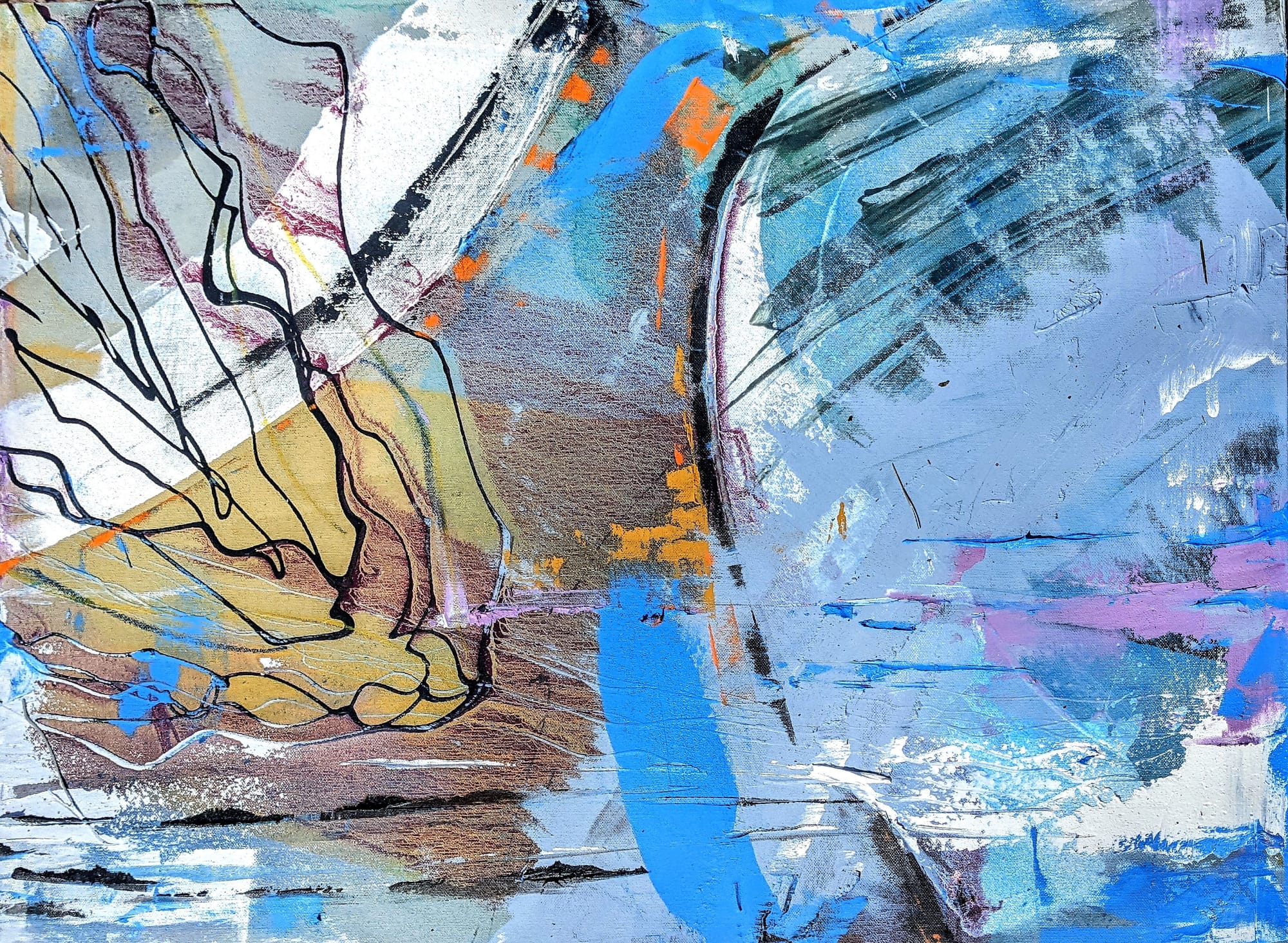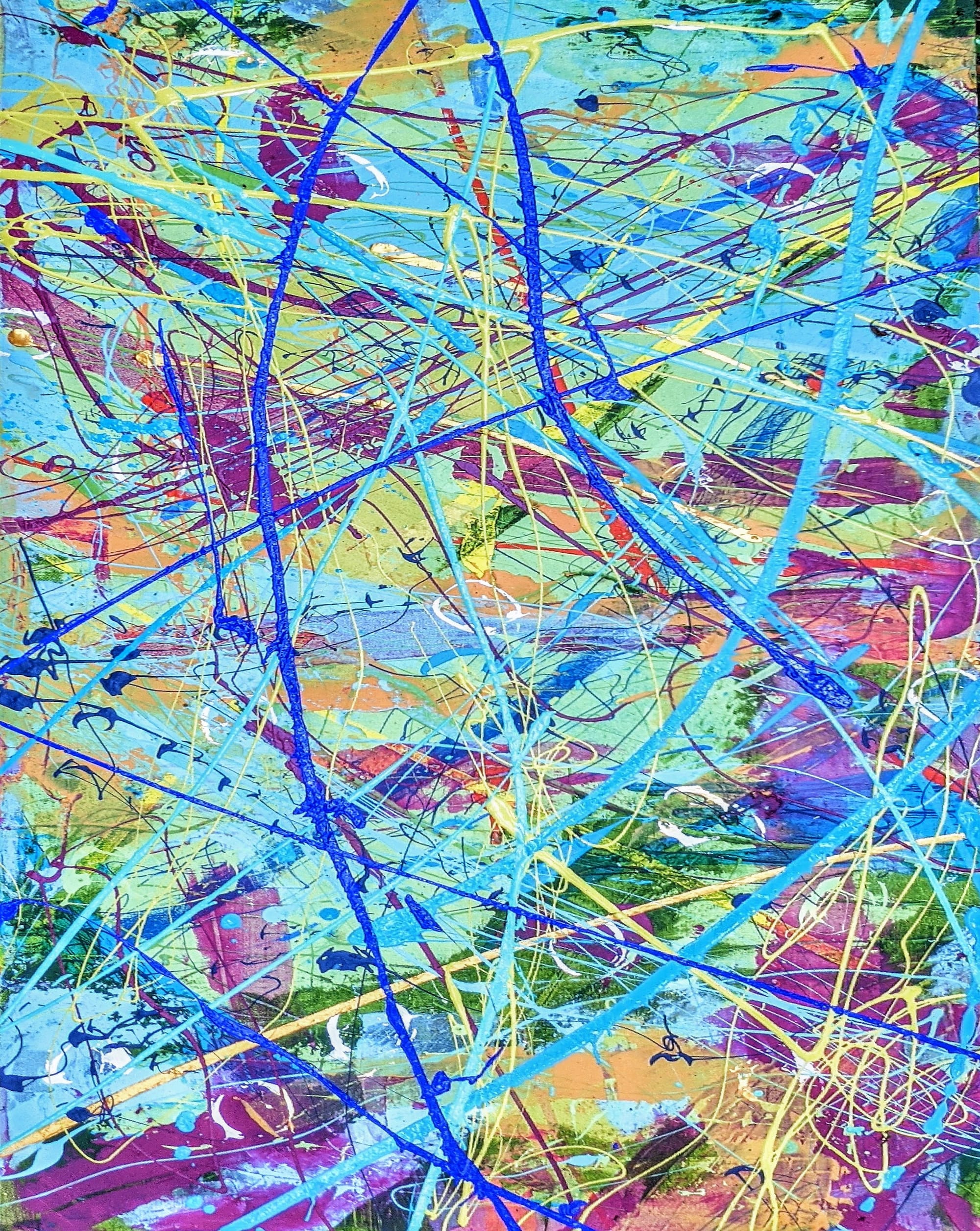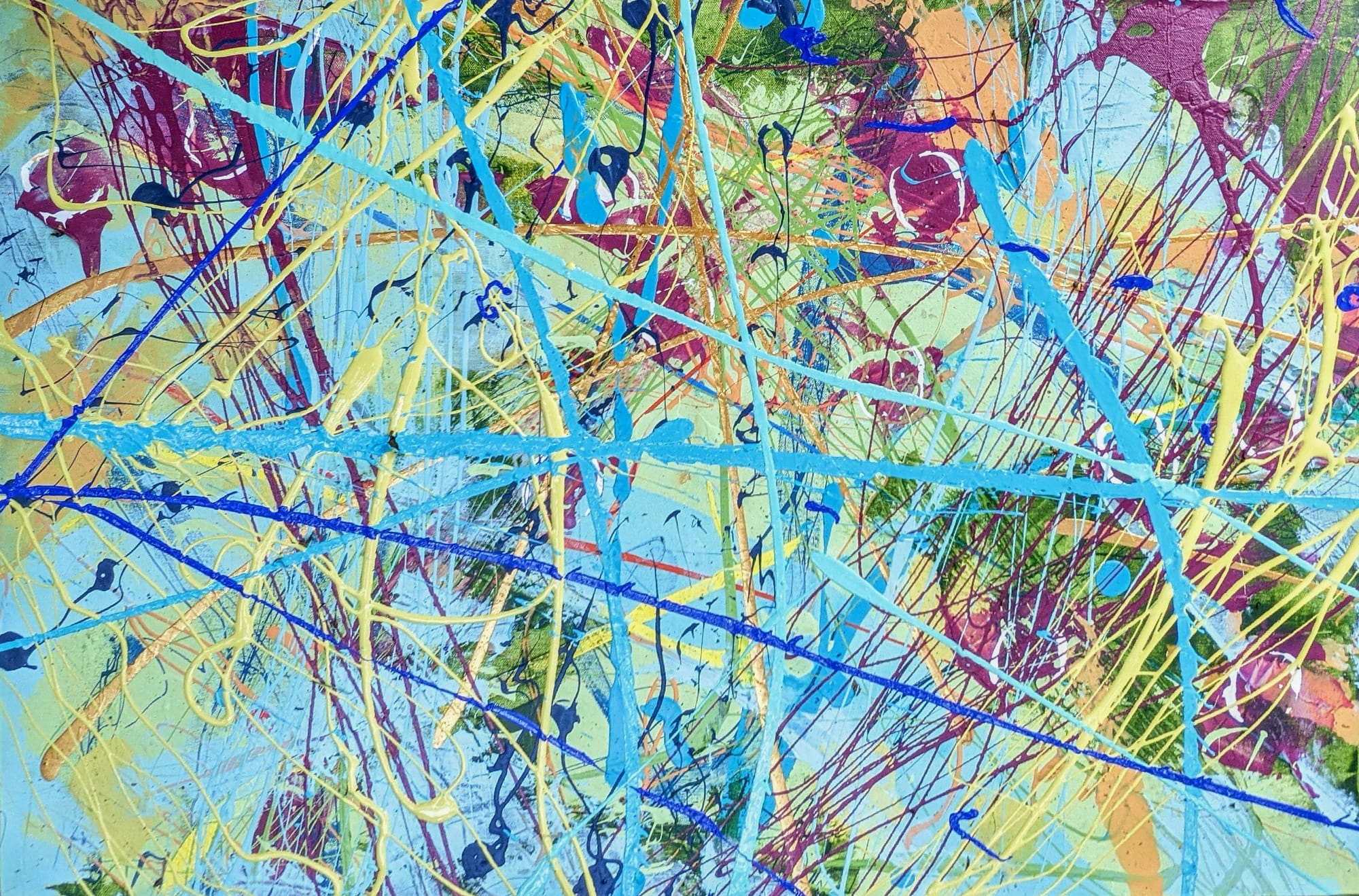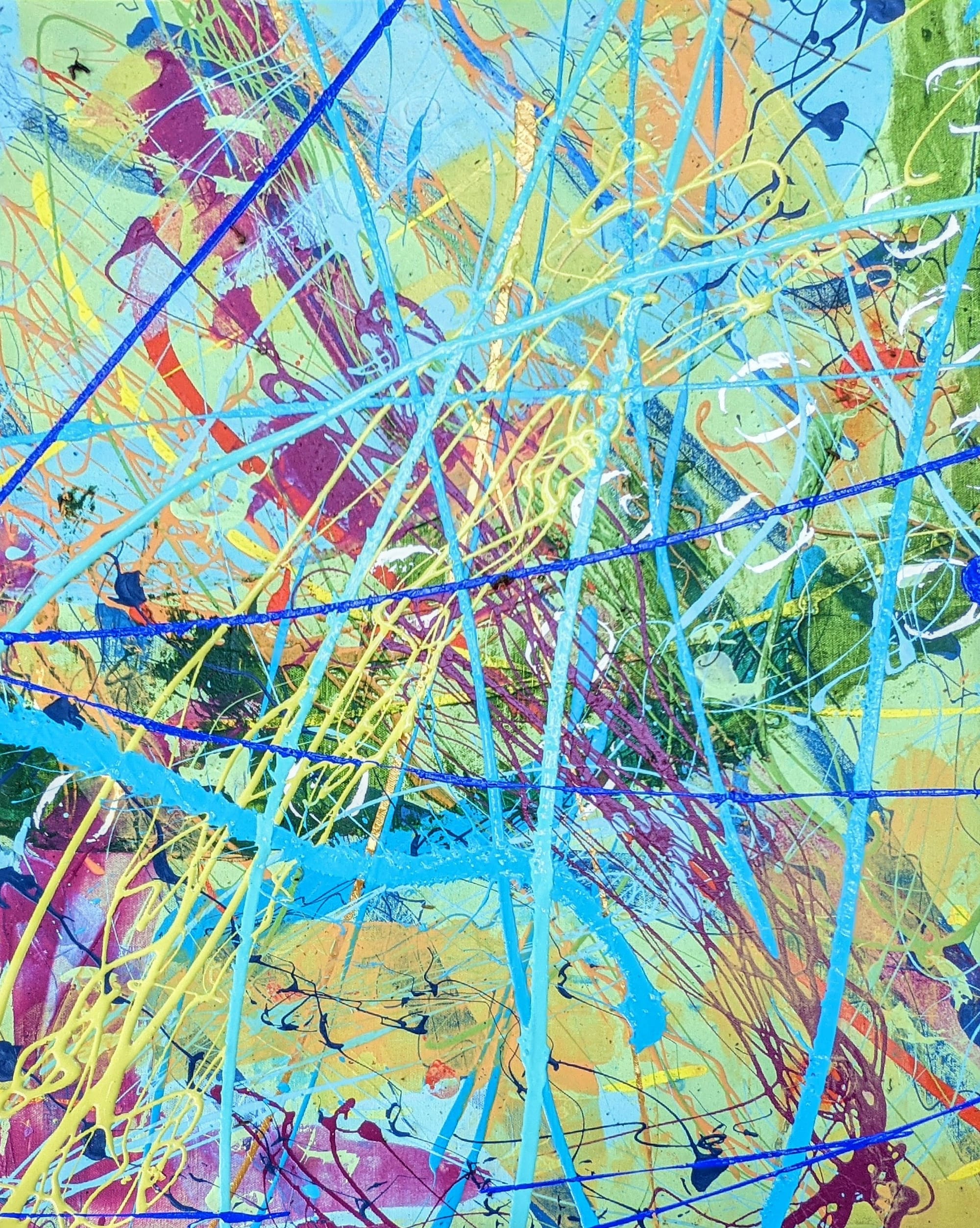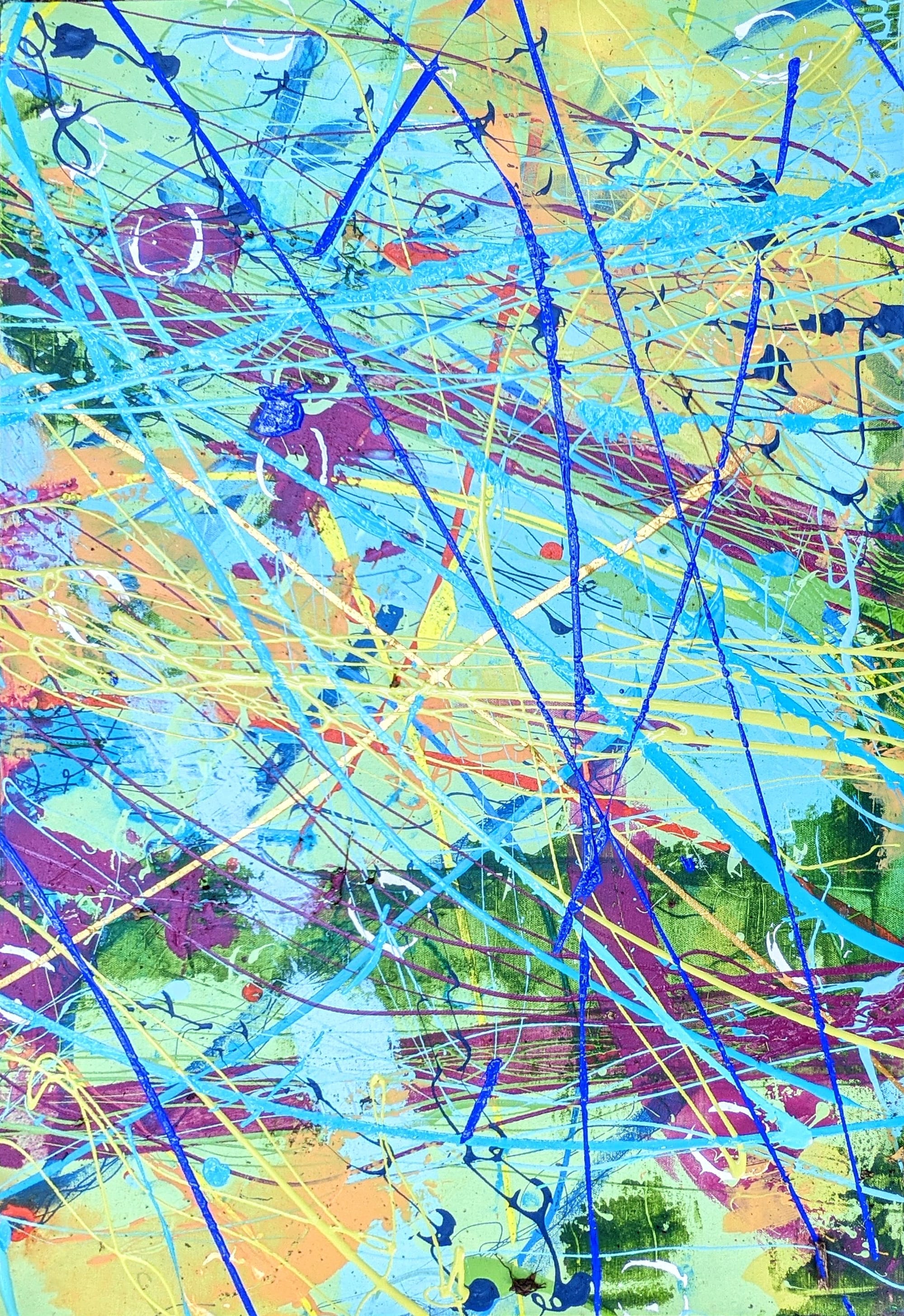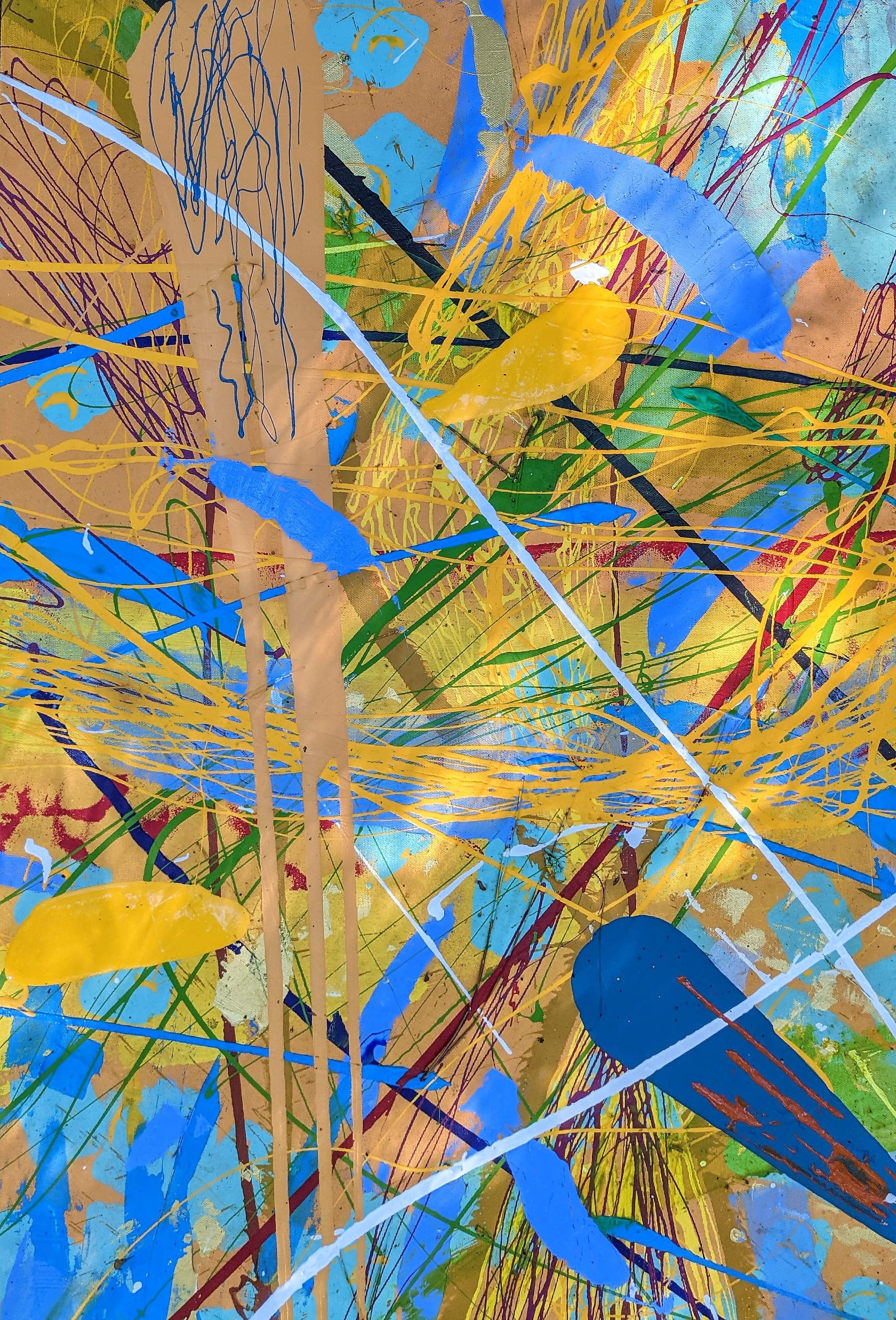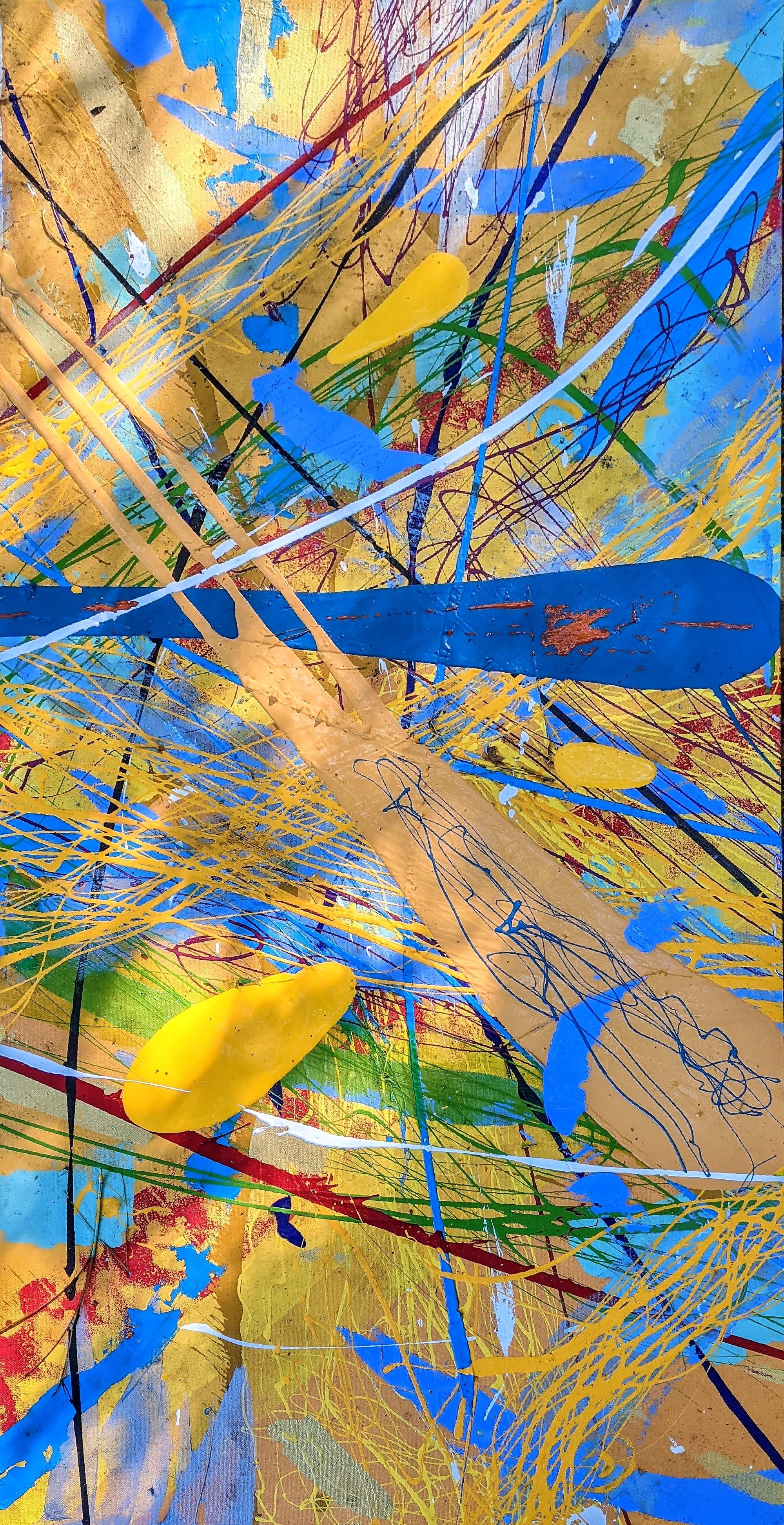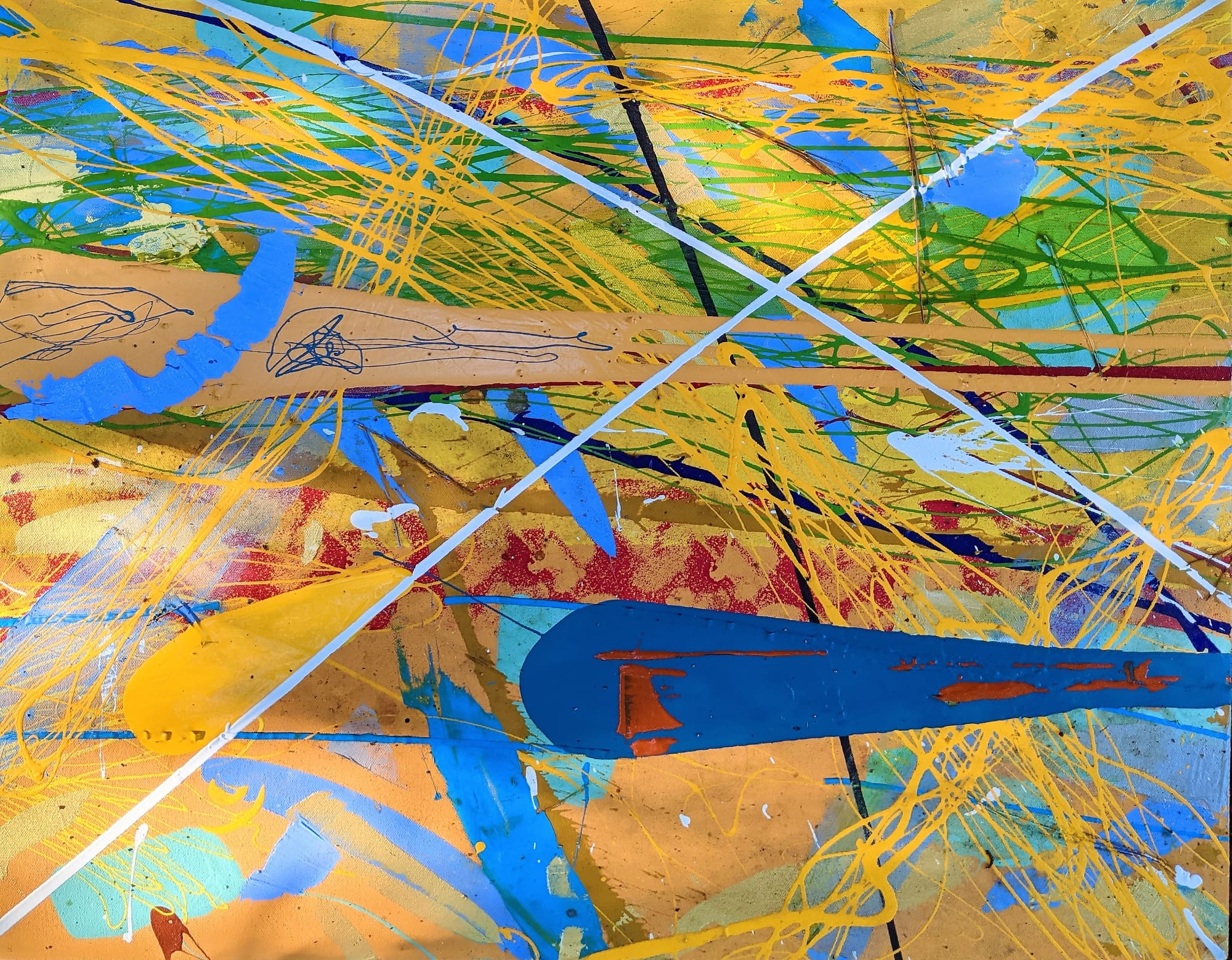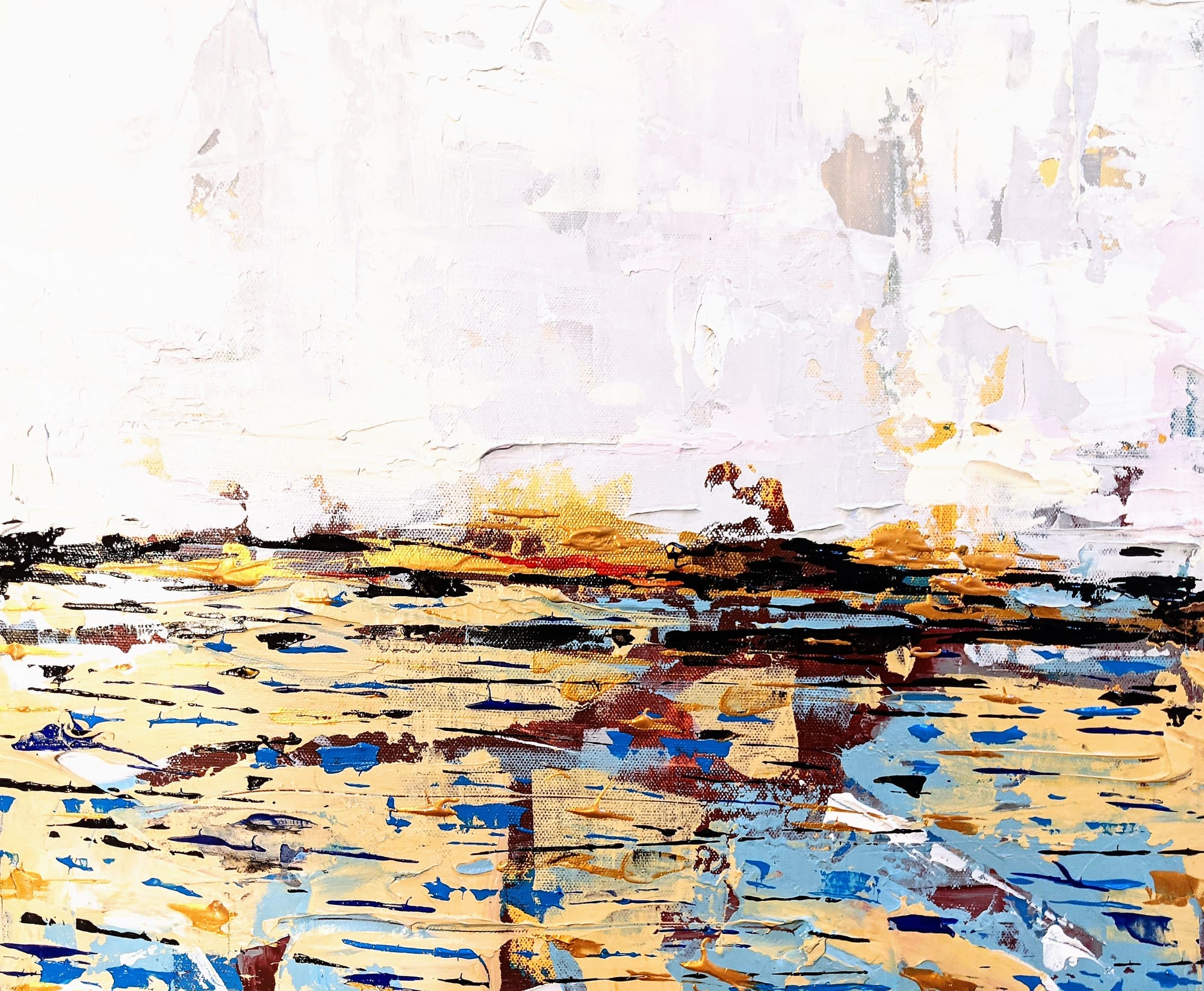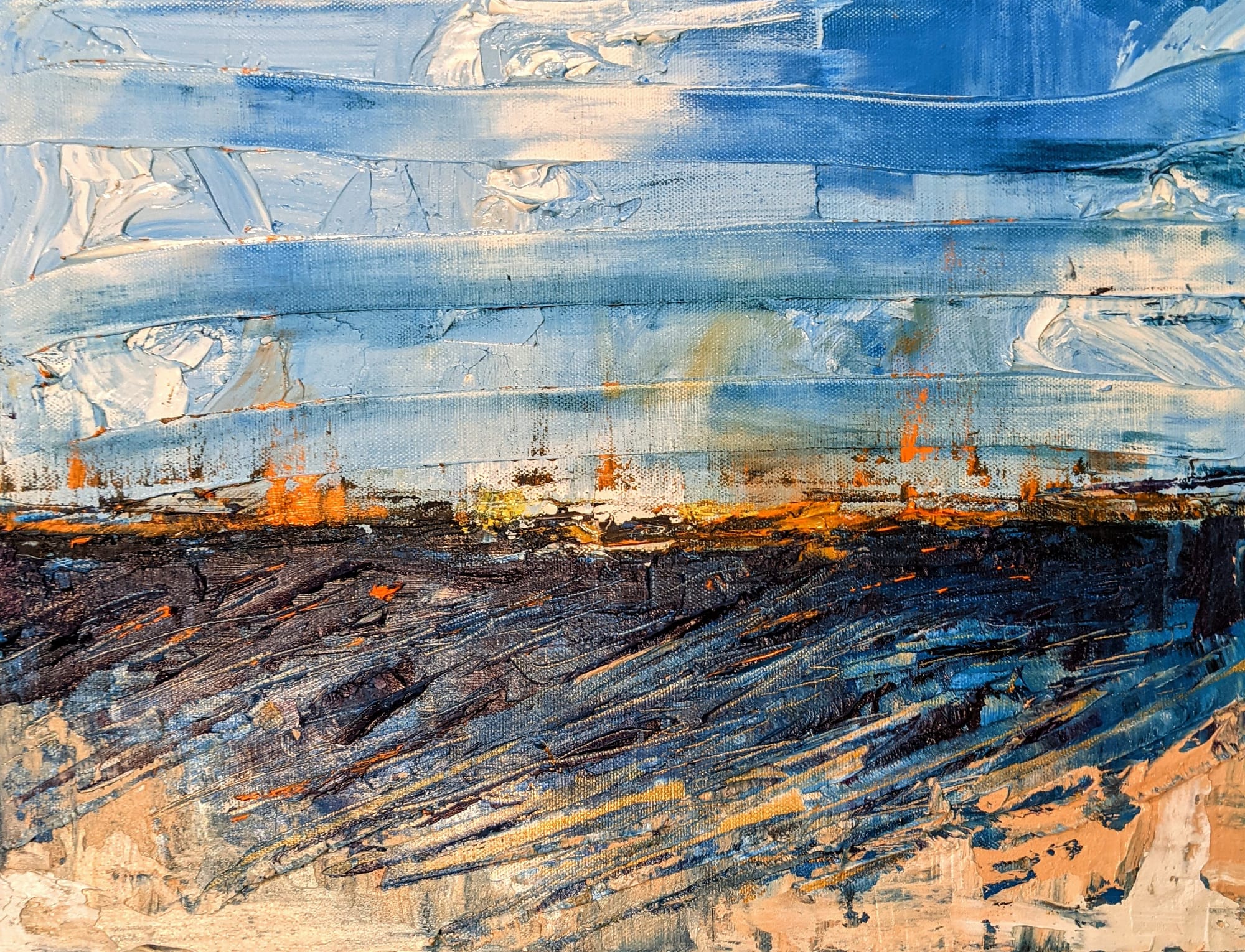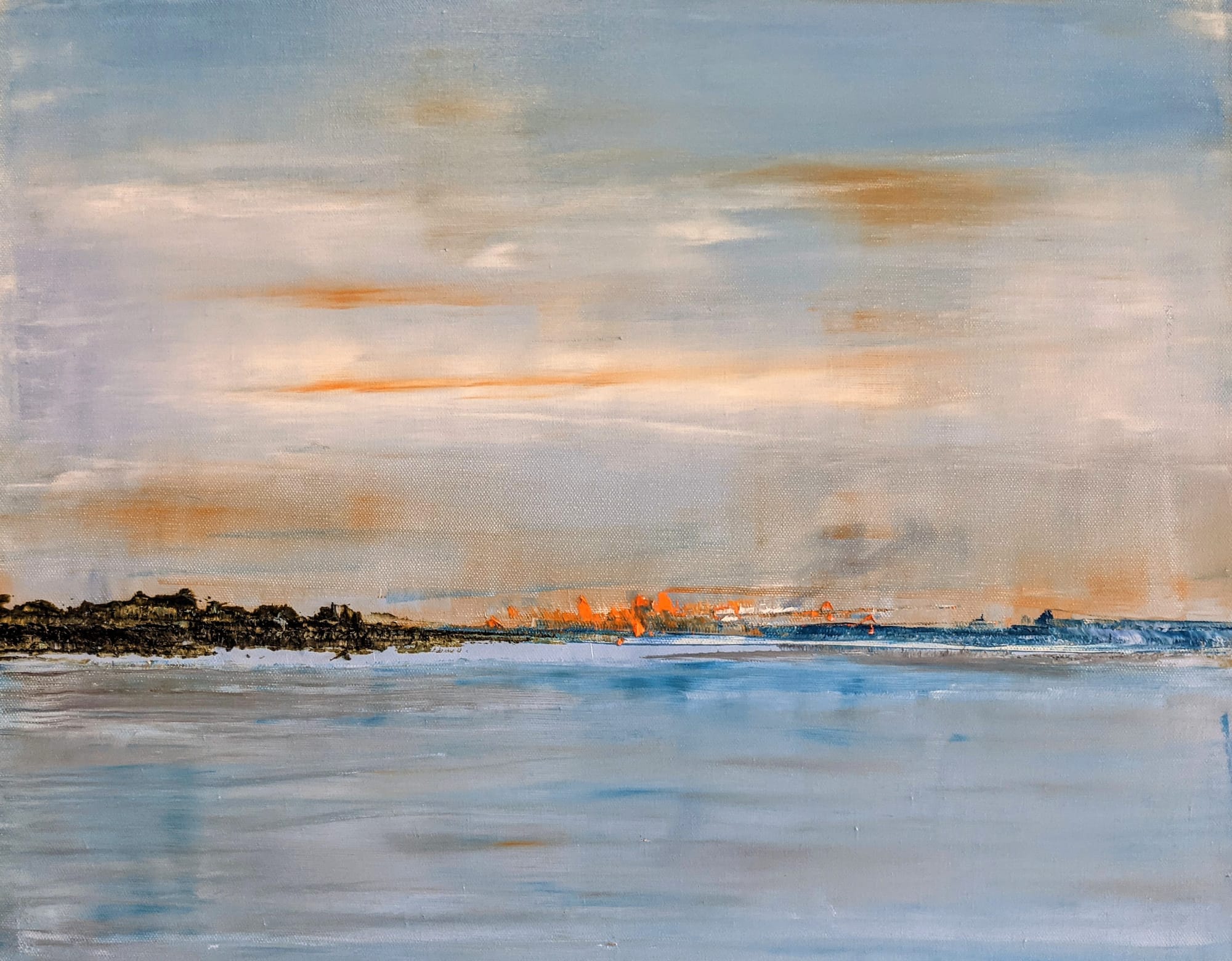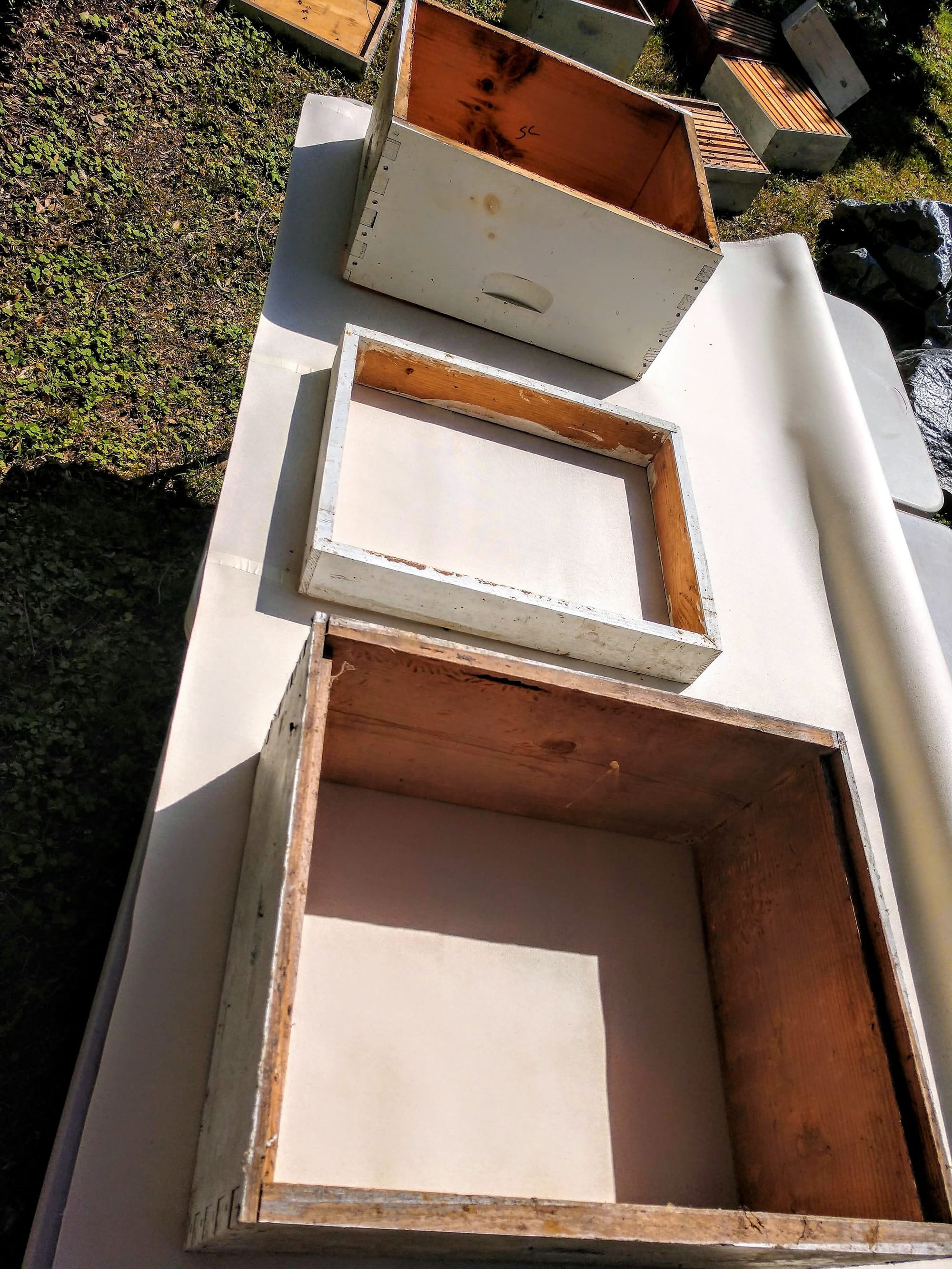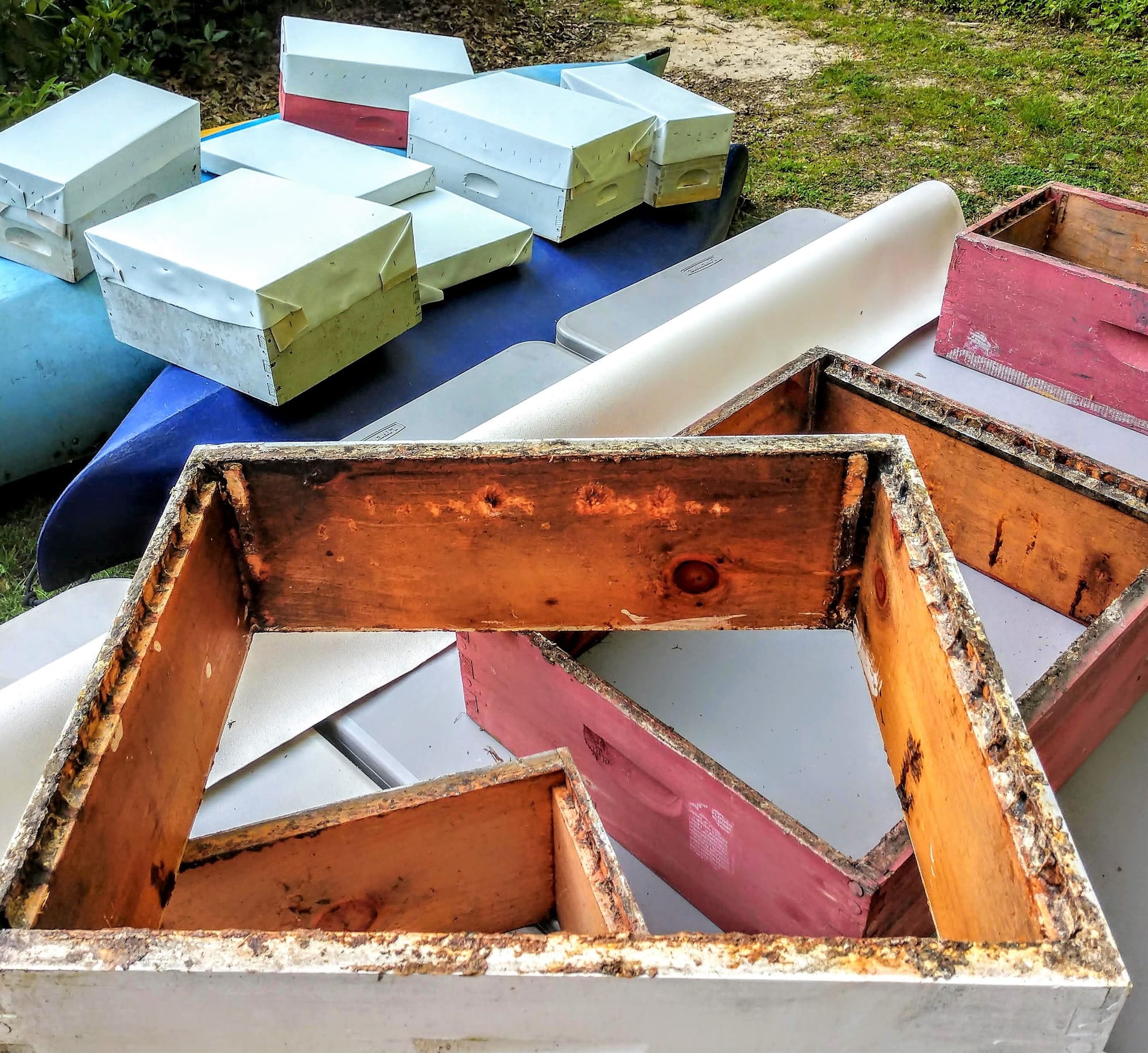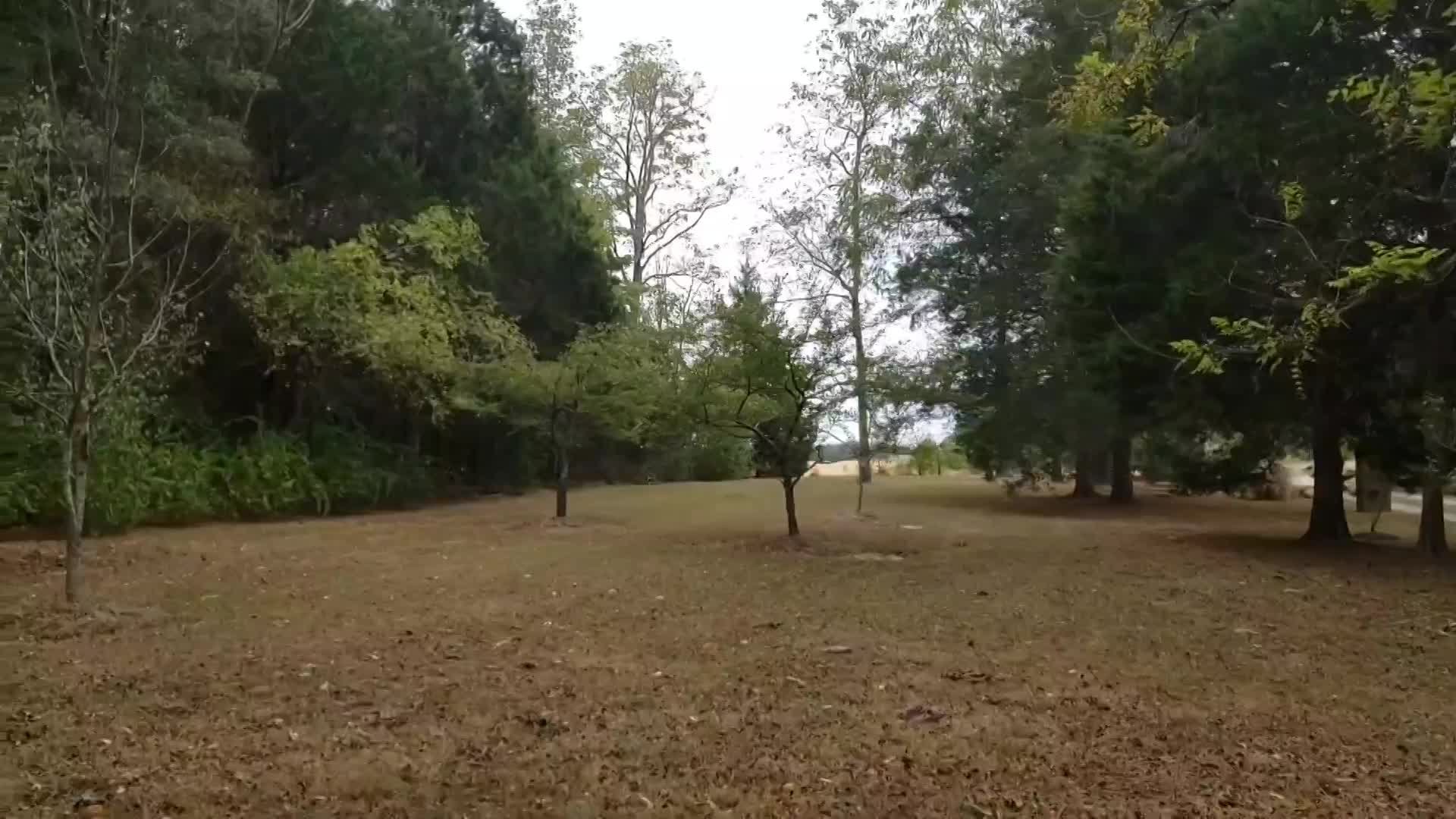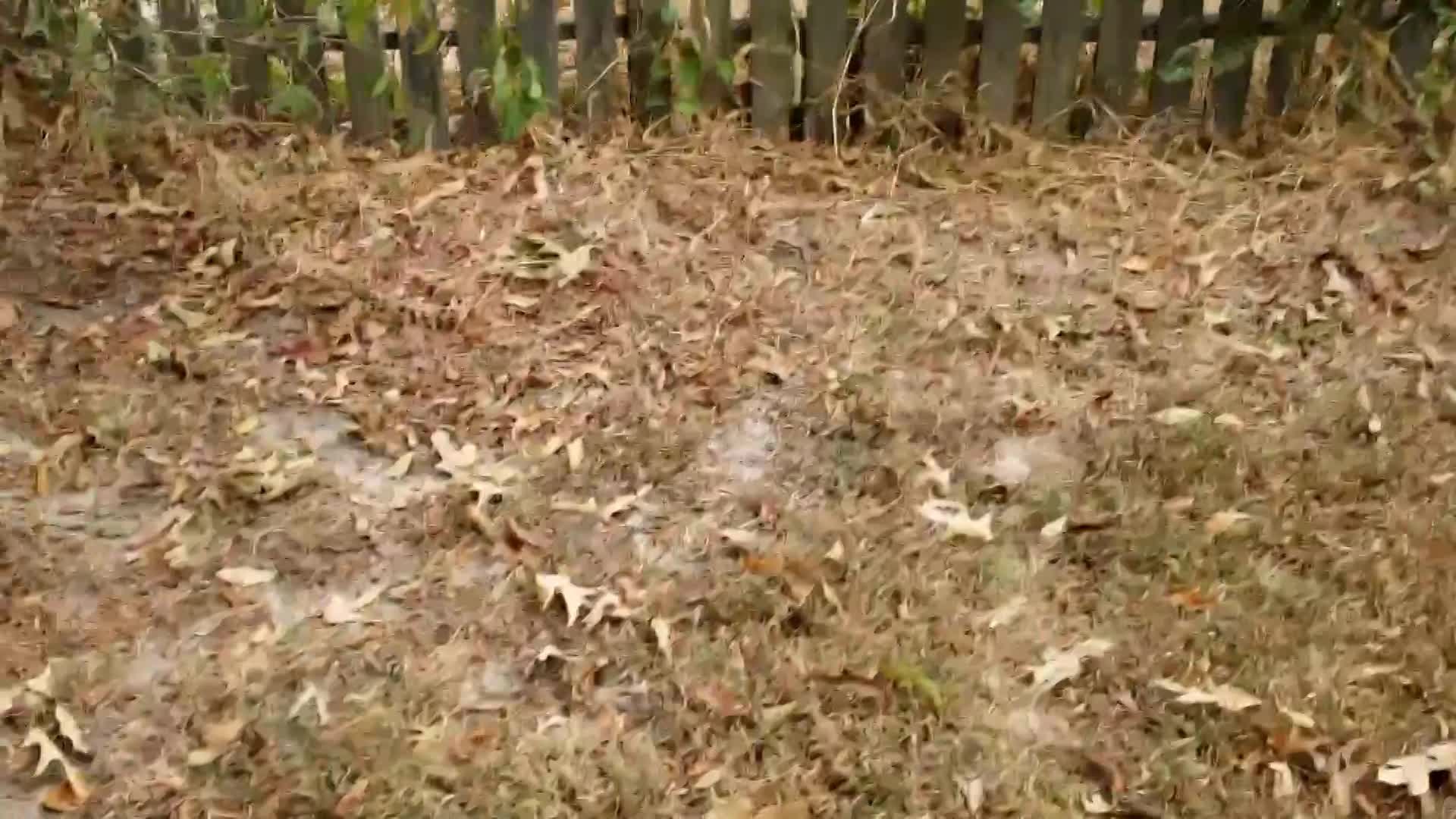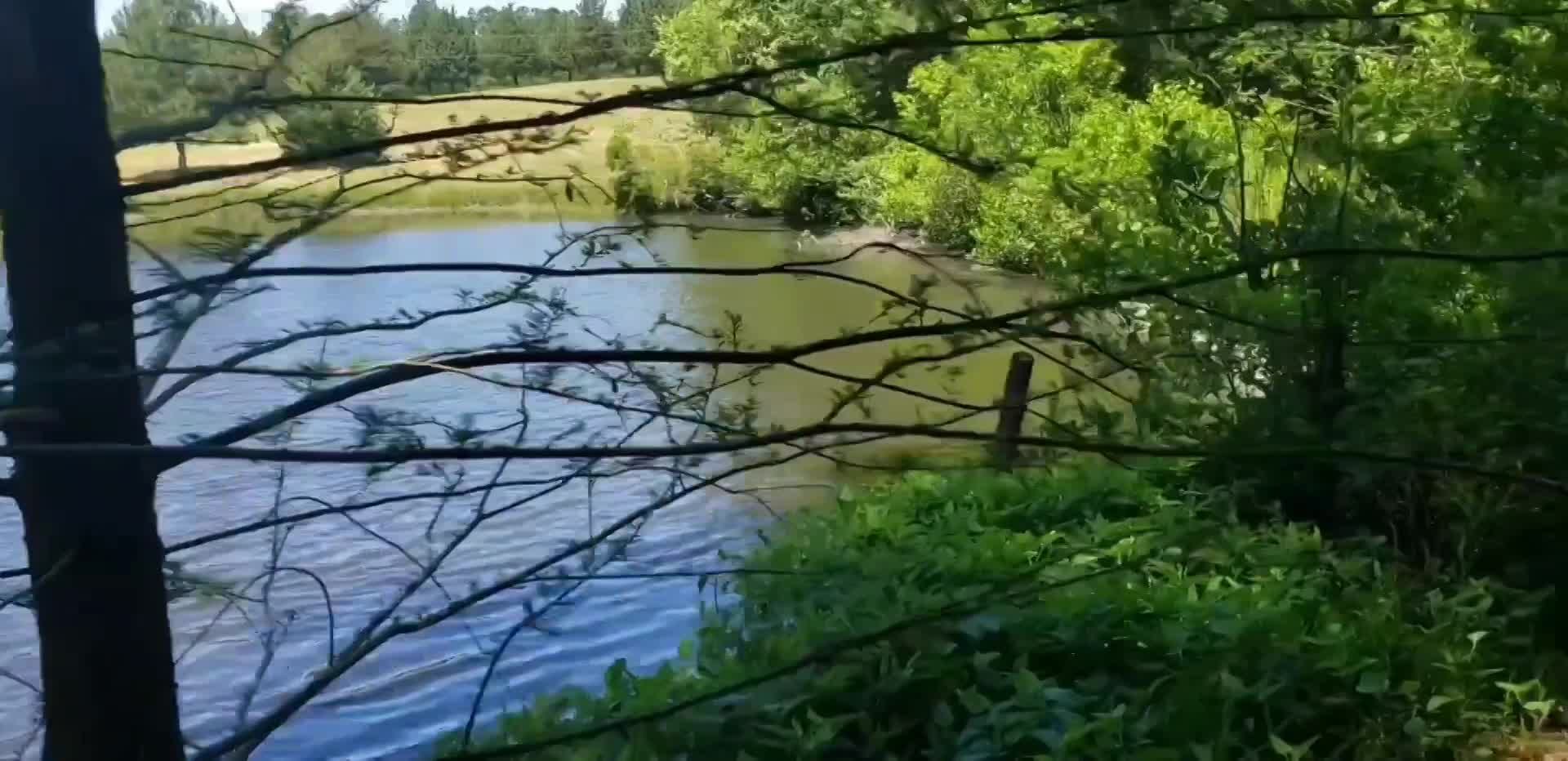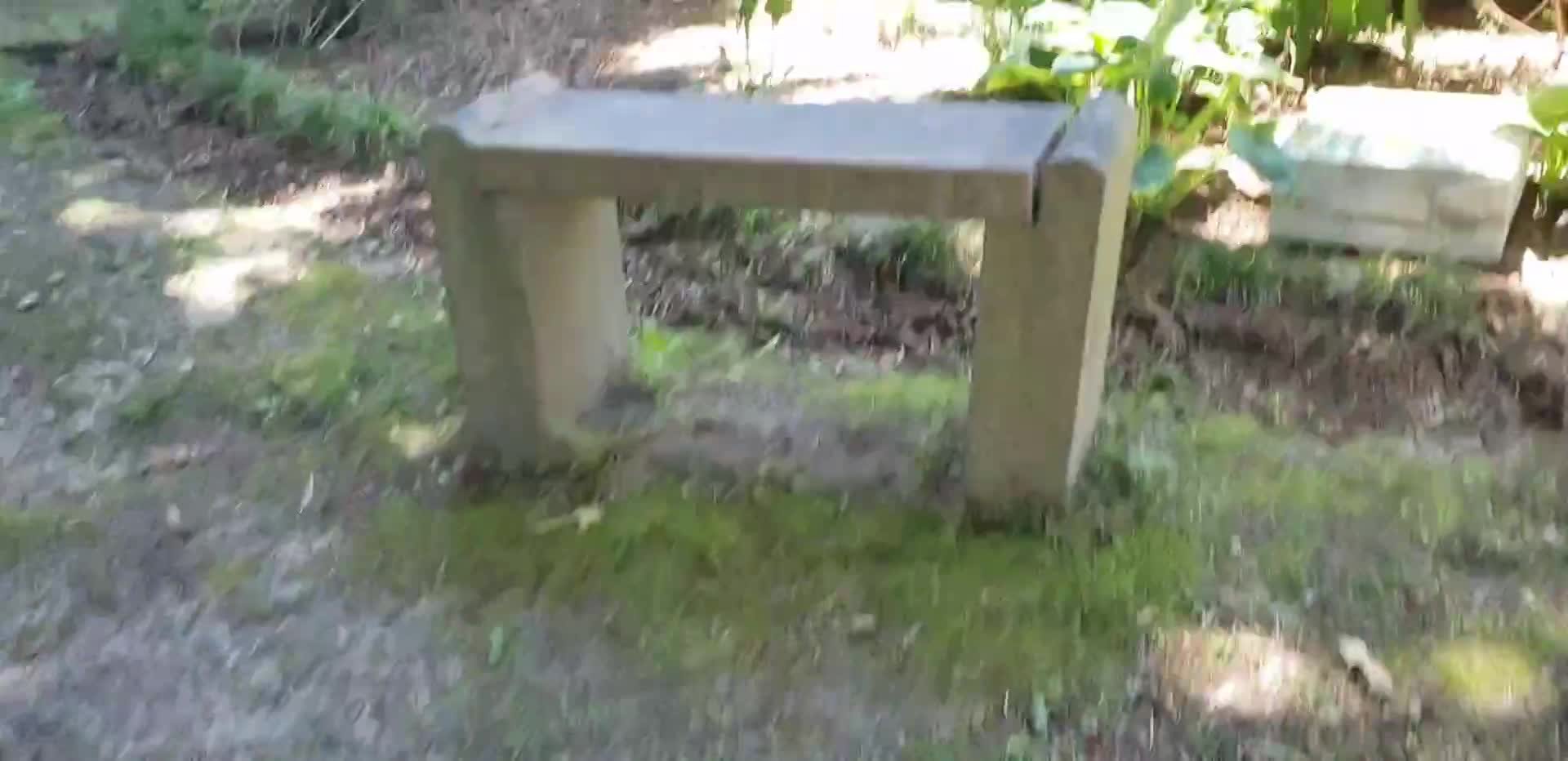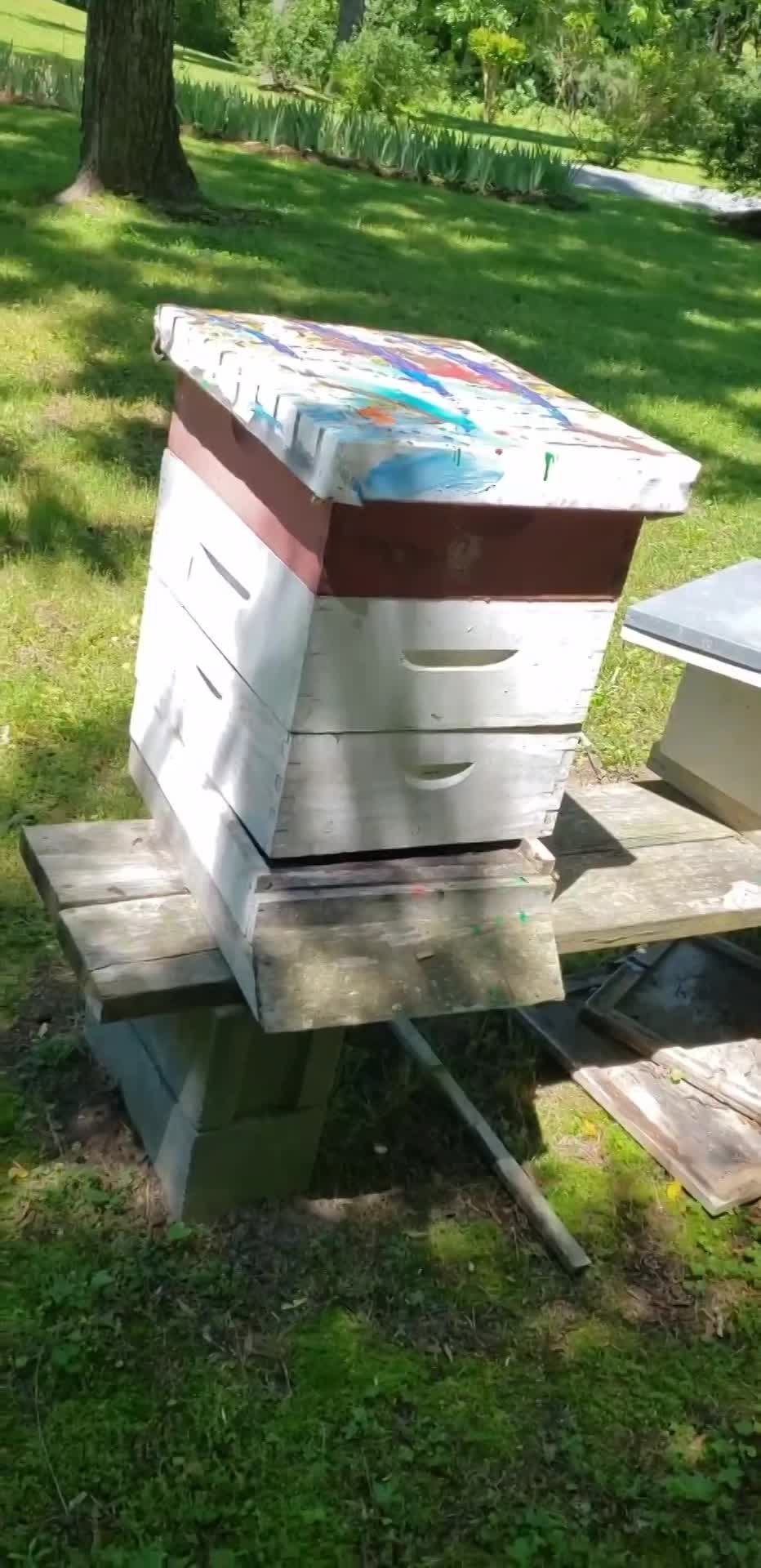MICHAEL H FAULKNER
"Art is all about questions and being present with nature, at the moment, without fear of what is going to happen next...whether in life or on the canvas."
FOUR SEASONS
FOUR SEASONS (ongoing) is a collection of 16 paintings that capture Faulkner's unique approach and collaboration with nature. This current work is a progression from "REBIRTH" 2019/2020. Four canvases are placed in an outdoor studio with Mother Nature, natural light and organic elements as the inspiration. The first four, representing AUTUMN, were completed December 20th, 2021. Upon removal, the stretchers were replaced with blank canvas to collect and inspire WINTER, SPRING & SUMMER.
REBIRTH
Many years ago, along with my friend Dr. John, who is now deceased, we chose to become beekeepers. It was not a random choice, but rather one that occurred after months of research and months of classes and training. The lengthy process provided new insight and appreciation for these lovely, complex creatures beyond my already established fascination.
For the first several years my hives flourished, providing hours of meditative relaxation, and copious amounts of honey. One of my favorite pastimes was to sit near the hives, cocktail in hand and watch them come and go for hours. Years four through nine were a struggle to maintain a string of healthy hives for multiple reasons – mites, viruses, fungus, and hive beetles. Never the less, I persevered and continued to manage to the best of my ability. My friend Dr. John’s luck was a bit better than mine, but he too struggled.
Dr. John passed away a few years ago, and prior to his death, he gifted me with three of his live hives. The gesture was monumental at the time, leaving me with a new sense of commitment and duty. Dr. John’s hive performed well for the first year. The second year I returned home from work related travel to find them all dead, for unknown reasons. I consulted a local beekeeper for assistance with obtaining new bees. After which, three new hybrid queens reared for strength and consistency had been procured. “Dr. John, I need to do this for you!” I told myself.
The new hives were installed in the spring of 2018. I even purchased new hives and frames for each of the three hives in the event the old hive boxes contained anything that would harm the new bees. They were picture perfect from late March through early May of 2019.
I returned home from a work-weekend of travel, pulled into the drive and noticed that there was not much activity surrounding the hives for a warm spring Sunday afternoon. Before entering the house, I immediately put the SUV in park, and went to the hives for inspection. I was shocked to see that each of the three hives were filled with dead bees. There are no words to describe the wrenching I felt in my gut and the overwhelming sadness. Later in the week I found out that several surrounding beekeepers lost all of their hives too. After days of discussion, evaluating the hives and seeking professional assistance it was determined that our hives were killed as a result of toxic pesticides used in the local farm fields.
My personal struggle was so overwhelming; I could not deal with looking at the hive boxes. At that moment I vowed to never keep bees again.
The following weekend, my husband and I were hosting two couples for dinner. One couple from South Carolina and the other from Virginia. Two of the four individuals - Karen Weis & Carolyn Dudley are both respected artists. I, on the other hand had not seriously committed to an artistic project in years due to time and professional demands. Their creative energy was exactly what I needed to keep my mind off the loss of the bees. Through discussing an array of creative topics from personal artistic styles, mediums, artistic retreats, colors, and textures I was overcome with an energy force that I cannot explain to this day. It was an epiphany like no other, an idea that consumed me, giving me energy and a path to overcome. I immediately blurted a never ending stream:
“You all are going to think I’m nuts. Seriously, I have just been flooded with this creative idea. It will be an artistic journey to honor the plight that bees are facing, while at the same time giving me the space and grace to heal.
It will be a year-long project. Yes, it will last 365 days. I am going to strip down the hive boxes with the exception of one, that I will leave standing. I will stretch canvas over a mixture of hive boxes, hive box covers and nuke boxes, totaling twelve, representing the months of the year. The canvases will be placed in various locations on the property, all outdoors reflecting the bee’s natural surroundings. The first canvas will be adhered to the one remaining hive box cover. Every week, I will attend to the painting as if I was checking my hives. My medium of choice and method to apply the paint will be based on the weather, the light and what nature has left on the canvases. Fifty-two applications per painting with 624 total over the course of the year will determine the creative outcomes. There will be joy in what mother nature shares – rain, snow, heat, insects, animals, fruit, sap, stick, etc., will all be embraced as part of the creative journey, and add character and meaning to the final images. Time of day throughout the year and the casting of shadows will also guide as inspirational forces. I will not be limited - technique and medium will be determined week by week.” I spoke as if I had been staging this journey for that past year. I knew, that evening, in front of Carolyn & Karen as my witnesses there was nothing that was going to stop me from seeing this through to the end.
It is Saturday, May 30th, the last day of the year-long project. I am filled with emotion, pride and a sense of honor for having completed the journey. Not just from an artistic perspective from, but rather a deep rooted sense of purpose and commitment that channeled and fueled the creative path.
For the last application to the twelve canvases I poured acrylic paint into a wide-mouthed Mason jar, cut a piece of kitchen string approximately two feet in length and grabbed a small piece of wooden dowel to be used to poke the string into the paint.
Every week for the past year, I approached each painting in sequence. First, I went to the one standing hive box covered with canvas and three hive boxes underneath, and then followed through the property to the various other locations in the woods, near the water, in the garden, etc. Never once did I break routine. After each weekly application the canvas were photographed for documentation of the process.
This particular Saturday, is special. Not only is it the last time I will be completing the rotation, but it’s a glorious day with bright blue skies and a light cool breeze. I am in my element. Walking down the long gravel drive, I reflect on the various days that this artistic journey started with rain, snow, extreme heat, wind, ice and I am joyful today is beautiful. I turn left onto the grass area and proceed to the edge of pines where the last remaining hive box stands. I am within three feet of the empty box. I stop, shake my head, remove my glasses and take another look. I am in total shock! I place the jar of paint on the ground, lower myself on to the grass and begin to cry tears of joy. Thousands of bees are coming in and out of the once dead, empty hive. I cannot believe it, and immediately take photos. “They were not there yesterday, and how in the hell is this happening?” I loudly ask no one in particular. The obvious, is understood – Dr. John!
Quickly, working in harmony with the active, curious bees I add the final application to the painting, and proceed to the second one, the third one, the fourth one, and ending at number twelve. In my elated state, I forget to photograph each of the final steps and return with a large glass of wine in hand and camera to document the various final stages.
Having completed formal art training in 1982 and in 1983 my personal creative journey over the past thirty-seven years has varied, often leaving me perplexed about my role as an artist, and what does it mean to call yourself an artist? For me personally, after obtaining two art degrees and completing various pieces for various reasons, I refrained from calling or acknowledging myself as an artist. This creative process taught me that art comes from a place within. It's a driving force. One you cannot say no to and one that leads you on a path of exploration. Art is all about questions, and being present with nature, at the moment without fear of what is going to happen next...whether in life or on the canvas. As an artist, I am healed, I am present, I am proud and I am excited about the next creative journey.
For the first several years my hives flourished, providing hours of meditative relaxation, and copious amounts of honey. One of my favorite pastimes was to sit near the hives, cocktail in hand and watch them come and go for hours. Years four through nine were a struggle to maintain a string of healthy hives for multiple reasons – mites, viruses, fungus, and hive beetles. Never the less, I persevered and continued to manage to the best of my ability. My friend Dr. John’s luck was a bit better than mine, but he too struggled.
Dr. John passed away a few years ago, and prior to his death, he gifted me with three of his live hives. The gesture was monumental at the time, leaving me with a new sense of commitment and duty. Dr. John’s hive performed well for the first year. The second year I returned home from work related travel to find them all dead, for unknown reasons. I consulted a local beekeeper for assistance with obtaining new bees. After which, three new hybrid queens reared for strength and consistency had been procured. “Dr. John, I need to do this for you!” I told myself.
The new hives were installed in the spring of 2018. I even purchased new hives and frames for each of the three hives in the event the old hive boxes contained anything that would harm the new bees. They were picture perfect from late March through early May of 2019.
I returned home from a work-weekend of travel, pulled into the drive and noticed that there was not much activity surrounding the hives for a warm spring Sunday afternoon. Before entering the house, I immediately put the SUV in park, and went to the hives for inspection. I was shocked to see that each of the three hives were filled with dead bees. There are no words to describe the wrenching I felt in my gut and the overwhelming sadness. Later in the week I found out that several surrounding beekeepers lost all of their hives too. After days of discussion, evaluating the hives and seeking professional assistance it was determined that our hives were killed as a result of toxic pesticides used in the local farm fields.
My personal struggle was so overwhelming; I could not deal with looking at the hive boxes. At that moment I vowed to never keep bees again.
The following weekend, my husband and I were hosting two couples for dinner. One couple from South Carolina and the other from Virginia. Two of the four individuals - Karen Weis & Carolyn Dudley are both respected artists. I, on the other hand had not seriously committed to an artistic project in years due to time and professional demands. Their creative energy was exactly what I needed to keep my mind off the loss of the bees. Through discussing an array of creative topics from personal artistic styles, mediums, artistic retreats, colors, and textures I was overcome with an energy force that I cannot explain to this day. It was an epiphany like no other, an idea that consumed me, giving me energy and a path to overcome. I immediately blurted a never ending stream:
“You all are going to think I’m nuts. Seriously, I have just been flooded with this creative idea. It will be an artistic journey to honor the plight that bees are facing, while at the same time giving me the space and grace to heal.
It will be a year-long project. Yes, it will last 365 days. I am going to strip down the hive boxes with the exception of one, that I will leave standing. I will stretch canvas over a mixture of hive boxes, hive box covers and nuke boxes, totaling twelve, representing the months of the year. The canvases will be placed in various locations on the property, all outdoors reflecting the bee’s natural surroundings. The first canvas will be adhered to the one remaining hive box cover. Every week, I will attend to the painting as if I was checking my hives. My medium of choice and method to apply the paint will be based on the weather, the light and what nature has left on the canvases. Fifty-two applications per painting with 624 total over the course of the year will determine the creative outcomes. There will be joy in what mother nature shares – rain, snow, heat, insects, animals, fruit, sap, stick, etc., will all be embraced as part of the creative journey, and add character and meaning to the final images. Time of day throughout the year and the casting of shadows will also guide as inspirational forces. I will not be limited - technique and medium will be determined week by week.” I spoke as if I had been staging this journey for that past year. I knew, that evening, in front of Carolyn & Karen as my witnesses there was nothing that was going to stop me from seeing this through to the end.
It is Saturday, May 30th, the last day of the year-long project. I am filled with emotion, pride and a sense of honor for having completed the journey. Not just from an artistic perspective from, but rather a deep rooted sense of purpose and commitment that channeled and fueled the creative path.
For the last application to the twelve canvases I poured acrylic paint into a wide-mouthed Mason jar, cut a piece of kitchen string approximately two feet in length and grabbed a small piece of wooden dowel to be used to poke the string into the paint.
Every week for the past year, I approached each painting in sequence. First, I went to the one standing hive box covered with canvas and three hive boxes underneath, and then followed through the property to the various other locations in the woods, near the water, in the garden, etc. Never once did I break routine. After each weekly application the canvas were photographed for documentation of the process.
This particular Saturday, is special. Not only is it the last time I will be completing the rotation, but it’s a glorious day with bright blue skies and a light cool breeze. I am in my element. Walking down the long gravel drive, I reflect on the various days that this artistic journey started with rain, snow, extreme heat, wind, ice and I am joyful today is beautiful. I turn left onto the grass area and proceed to the edge of pines where the last remaining hive box stands. I am within three feet of the empty box. I stop, shake my head, remove my glasses and take another look. I am in total shock! I place the jar of paint on the ground, lower myself on to the grass and begin to cry tears of joy. Thousands of bees are coming in and out of the once dead, empty hive. I cannot believe it, and immediately take photos. “They were not there yesterday, and how in the hell is this happening?” I loudly ask no one in particular. The obvious, is understood – Dr. John!
Quickly, working in harmony with the active, curious bees I add the final application to the painting, and proceed to the second one, the third one, the fourth one, and ending at number twelve. In my elated state, I forget to photograph each of the final steps and return with a large glass of wine in hand and camera to document the various final stages.
Having completed formal art training in 1982 and in 1983 my personal creative journey over the past thirty-seven years has varied, often leaving me perplexed about my role as an artist, and what does it mean to call yourself an artist? For me personally, after obtaining two art degrees and completing various pieces for various reasons, I refrained from calling or acknowledging myself as an artist. This creative process taught me that art comes from a place within. It's a driving force. One you cannot say no to and one that leads you on a path of exploration. Art is all about questions, and being present with nature, at the moment without fear of what is going to happen next...whether in life or on the canvas. As an artist, I am healed, I am present, I am proud and I am excited about the next creative journey.
Reflection
With the canvases stretched over the various hive boxes and lids, I intuitively placed them around the twelve acre farm. The intent was to represent the area the bees considered home.
"A work of art; and yet no art of man, can work, this work, these little creatures can."
- Geffrey Whitney
"A work of art; and yet no art of man, can work, this work, these little creatures can."
- Geffrey Whitney
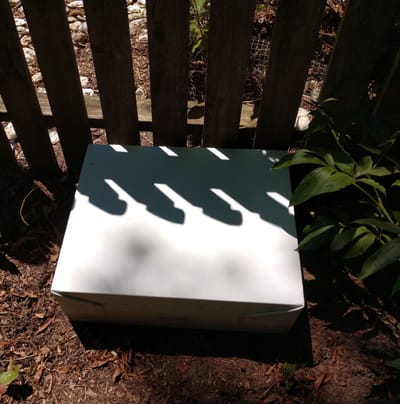
Reflection
The canvases were left in their new homes for a week before I chose to approach them from a creative perspective. There was no predetermined approach in what was to be added to each canvas. In the beginning and throughout the year-long creative journey each week began and ended with the exact same sequence. Each canvas communicated directly based on light, shadow, and natures offering. The medium and tools of choice were selected on the day.
- Michael H. Faulkner
- Michael H. Faulkner
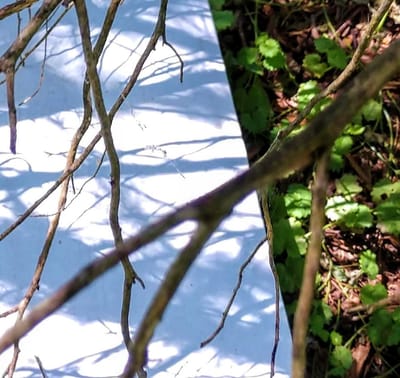
Reflection
The second week I approached each canvas with the intent to explore broad spaces that related to light and shadows. Again, intuition & emotion being the motivating factors. For the first four weeks the artistic process was driven by grief and sorrow, with nature as the lead. I was amazed at how quickly grief and sorrow turn to creative, soulful passion........
- Michael H. Faulkner
- Michael H. Faulkner
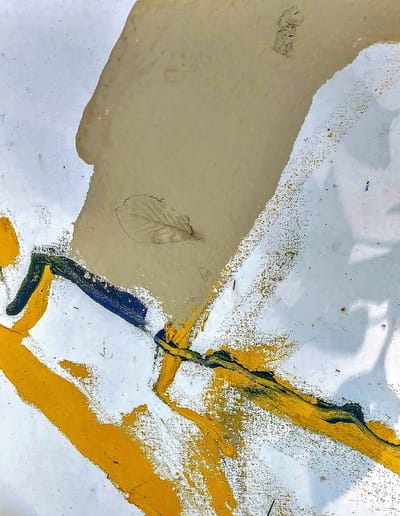
Reflection
"Every artist dips his brush into his soul and paints his own nature into his paintings."
- Henry Ward Beecher
- Henry Ward Beecher

Reflection
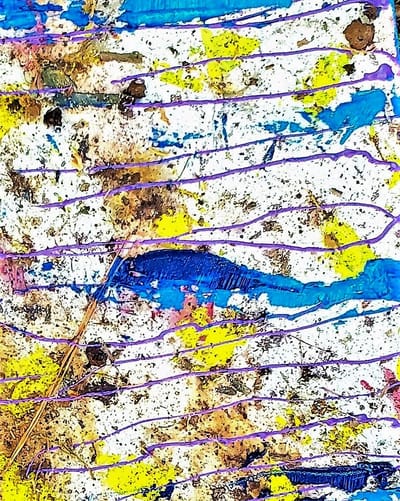
- Michael H. Faulkner
Reflection
"Nature is not only all that is visible to the eye.....it also includes the inner pictures of the soul."
- Edvard Munch
- Edvard Munch
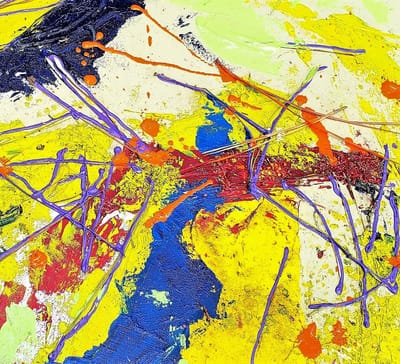
Reflection
"Great art picks up where nature ends."
- Marc Chagall
- Marc Chagall
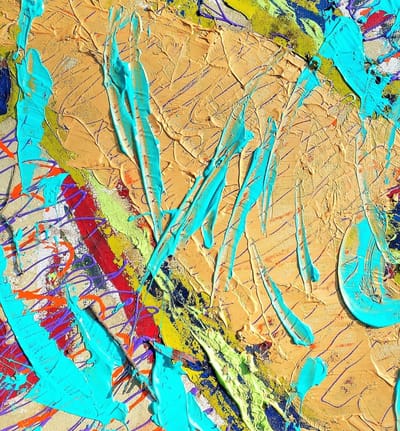
Reflection
"An artists must possess nature. He must identify himself with her rhythm, by efforts that will prepare the mastery which will later enable him to express himself in his own language."
- Henri Matisse
- Henri Matisse
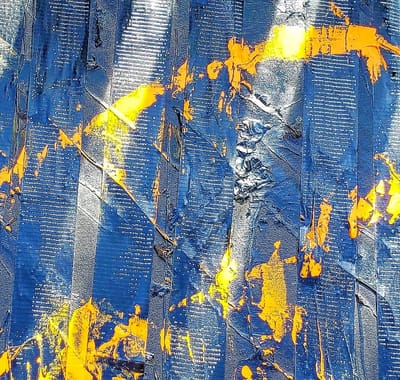
Reflection
"A bit of advice, don't copy nature too closely. Art is an abstraction; as you dream amid nature, extrapolate art from it, and concentrate on what you will create as a result."
- Paul Gaugin
- Paul Gaugin
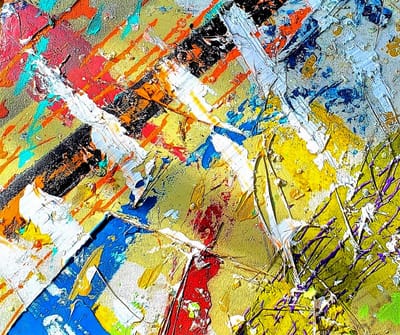
Reflection
"It is not the language of painters but the language of nature which one should listen to, the feeling for the things themselves, for reality is more important than the feeling for pictures."
- Vincent Van Gogh
- Vincent Van Gogh
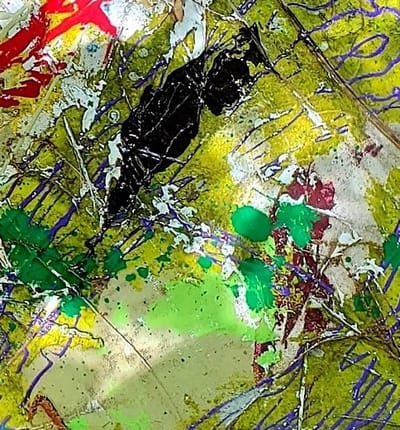
Reflection
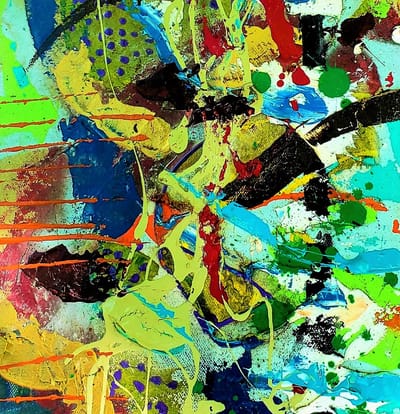
- Paul Cezanne
Reflection
"It doesn't make much difference how the paint is put on as long as something has been said. Technique is just a means of arriving at a statement."
- Jackson Pollock
- Jackson Pollock
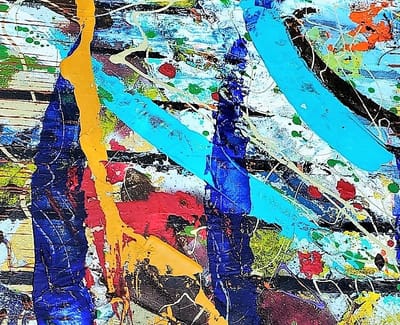
Contact
- Center Cross, Virginia, United States
Reflection
"As long as the painting is being viewed and appreciated it is never finished."
- Michael H. Faulkner
- Michael H. Faulkner
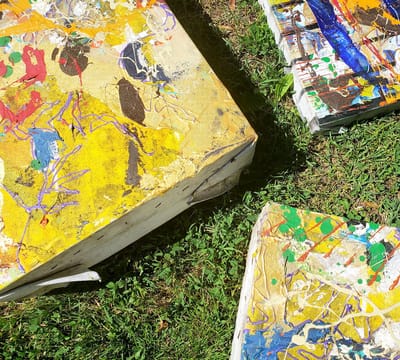
Reflection
"Everything you can imagine is real."
- Pablo Picasso
- Pablo Picasso
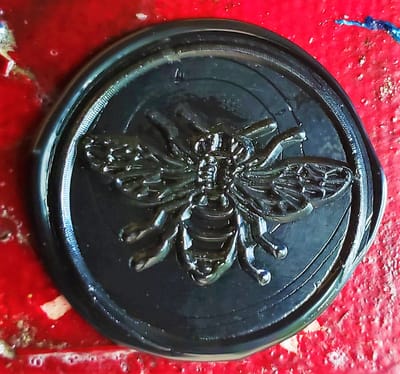
FINAL REFLECTION



"The artist must be sacrificed to their art. Like the bees, they must put their lives into the sting they give."
- Ralph Waldo Emerson
- Ralph Waldo Emerson






